Petra Kappert Fellows
Dr Joseba Estevez (June 2025 – August 2025)
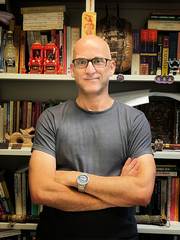
Joseba Estevez is a social anthropologist and Research Assistant Professor at the “Asian Religious Connections (ASIAR)” cluster within the Hong Kong Institute for the Humanities and Social Sciences (HKIHSS) at The University of Hong Kong. He earned his PhD in Social Anthropology from the University of Münster, Germany, where his award-winning research, “Conquering Demons, Taming the Forest: The Ritual Roles of the Lanten Yao Priests and Masters,” garnered the 2024 Frobenius Research Award—considered a top honour in anthropological scholarship in German-speaking countries.
Estevez’s work centres on the intricate ritual roles of Daoist experts among the Lanten Yao (Mun) communities, with whom he lived and conducted fieldwork for more than a decade in northern Laos’s Luang Namtha Province. Since 2023, his research scope has expanded to address new facets of social transformation and cultural resilience in the region. His academic interests encompass ritual, cosmology, exchange, animism, Buddhism, Chinese popular religion, and Daoism. Regionally, his expertise lies in mainland Southeast Asia, concentrating on the borderlands of China, Vietnam, Thailand, Myanmar, and Laos.
Estevez is noted for pioneering digital heritage preservation, leading significant projects such as the “Digital Library of the Lanten Textual Heritage” (Endangered Archives Programme, British Library, 2015–2021, EAP791 and EAP1126), “The Lanten Oral Stories” (BEQUAL, European Union, Australian Aid, 2017–2021), and the ongoing “Lanten Digital Archive” (2018 to present, EU and HKU). Together with the Centre for Asian and Transcultural Studies (CATS), Heidelberg University, he is completing the digitization of the Yao Manuscript Collections in Heidelberg (Germany) and Leiden (The Netherlands), funded by the project Chinese Folklore Resources Overseas, Sun Yat-sen University, Guangzhou, China.
Currently, he spearheads the international YAO DAO Project, establishing a reference centre for Yao Daoist studies.
|
Dr Estevez about his work at the CSMC: In collaboration with the Cluster of Excellence “Understanding Written Artefacts”, I am mapping Daoist manuscript exchange networks in the Southeast Asian Massif during the 19th century, and, in addition, I am also developing my research on the influence of German sinology on Yao Studies from the late Qing to the Republican Era (1850–1949) and in Japan (1850-1980). These themes are crystalizing in two volumes. One volume is a collaboration with Michael Friedrich on German Scholars in China and Japan in the 19th and 20th Centuries and their Contribution to the Yao Studies, exploring the impact of German scholarship through selected translations and a curated timeline. The other volume is co-edited with Agnieszka Helman-Wazny and Charles Ramble and deals with Manuscript Flows in Highland Asia: Social Networks and Material Culture, including a solo chapter on caravan networks and the flow of Yao Daoist manuscripts in the Upper Mekong Region during the 19th and 20th centuries. Additionally, my forthcoming articles in Manuscript Cultures (Universität Hamburg) analyse Lanten Yao manuscripts as ritual objects central to the production and transmission of ritual knowledge and their role as “living manuscripts” serving embodiments to particular deities. |
Dr Saïd Bousbina (June 2025 – December 2025)
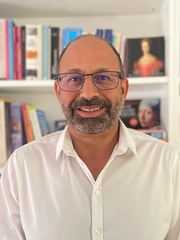
Saïd Bousbina is an associate researcher at the Center for Global Studies (Université Internationale de Rabat) and an independent scholar. He holds a Ph.D. from Université Paris 1 Panthéon-Sorbonne, with a specialization in the intellectual history of the Tijāniyya Sufi order in 19th-century West Africa. His research brings together the study of Islamic scholarship, manuscript cultures, and the historiographical practices of Muslim scholars in the Sahel. He has published on the works of Cheikh Moussa Kamara, Arabic manuscripts from West Africa, and doctrinal controversies within the Tijāniyya tradition. His current projects include a critical reconstruction of Zuhūr al-Basātīn and a contribution to the Malian Arabic Manuscript Microfilming Project (CRL).
Selected recent publications:
- When Controversy Becomes Instruction: Circulating Tijāni Writings in 19th-Century West Africa. The Case of ‘Umar al-Ḥawsī and al-Mukhtār b. Yerkoy Ṭalfi’s Doctrinal Responses to Aḥmad al-Bakkāy (forthcoming, 2025)
- A Hidden Repository of Arabic Manuscripts from Mali: The William A. Brown Collection, with Mauro Nobili
- Une source inédite sur la communauté de Yacouba Sylla en Côte d’Ivoire au début des années 1930: Doctrine, réseaux familiaux, cercle de disciples et échanges commerciaux
- Florilège au Jardin de l’Histoire des Noirs. Zuhūr al-Basātīn. L’Aristocratie peule et la révolution des clercs musulmans (Vallée du Sénégal), Traduction.
- “Tabkiyat al-Bakkāy”: Une lettre « lacrymogène » de Yerkoy Ṭalfī à Aḥmad al-Bakkāy. Le plaidoyer d’un défenseur de la Tijāniyya
|
Dr Bousbina about his work at the CSMC: This project aims to produce a critical reconstruction of Zuhūr al-Basātīn fī Tārīkh al-Sawādīn (The History of the Blacks), the major historical work of Cheikh Moussa Kamara (1864–1945), a key West African Muslim scholar from the Senegal River Valley. Written in Arabic in the 1920s, this 1,700-page manuscript traces the history of Fulani states and Muslim communities across the Western Sahel, from Sokoto (Nigeria) to Fouta Toro (Senegal/Mauritania), based on oral traditions and local chronicles. Despite its historiographical significance, the work remains largely unpublished and understudied. Although an excerpt was published in 1998 (Florilège au Jardin de l’Histoire des Noirs), no complete edition exists. A key difficulty lies in the presence of at least three divergent manuscript versions, preserved in West African archives. The first phase of the project will involve the comparative collation of these versions to establish a critical base text. This work will include field research, codicological and textual analysis, and a digitization plan to ensure long-term preservation and access. The project contributes to Islamic manuscript studies, African intellectual history, and broader efforts to center indigenous voices in the production of historical knowledge. |
Dr Nguyễn Tô Lan (June 2025 – August 2025)
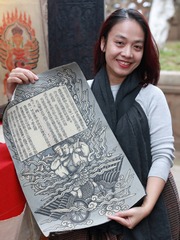
Nguyễn Tô Lan has worked as a researcher at the Institute of Philosophy (formerly a researcher at the Institute of Sino-Nom Studies, 2004–2024), Vietnam Academy of Social Sciences, since 2024. She graduated with a Bachelor’s degree in Linguistics and Literature in 2003 and subsequently obtained a Master’s degree in the same field in 2006 from the University of Social Sciences and Humanities, Vietnam National University (Hanoi). She also earned a Bachelor’s degree in Chinese Linguistics from the University of Languages and International Studies, VNU, in 2007. She received her Ph.D. in Linguistics and Literature from the Graduate Academy of Social Sciences (Vietnam) in 2012.
From September 2010 to June 2011, she was awarded an ASIA Fellows Award to conduct a comparative study in China. She was a Visiting Scholar at the Harvard-Yenching Institute during the 2013–2014 academic year and a Guest Scholar at the Institute for Research in Humanities, Kyoto University, in October 2014. From June to December 2015, she served as a Coordinating Research Scholar at the Harvard-Yenching Institute. She was a Visiting Scholar at Academia Sinica in 2018, Beijing Foreign Studies University in 2019, and a Visiting Researcher at Toyo Bunko in 2023.
She has been awarded grants by the American Council for Learned Societies (2015 cohort), the European Research Council (2020–2025), the Vietnam National Foundation for Science and Technology Development (2020–2023), the Binh Dinh Provincial Goverment (2025-2026).
Her research primarily focuses on Buddhism and the printing culture in East Asia. Her major publications include a co-authored monograph with Rostislav Berezkin (Fudan University), Avalokiteśvara of the Vietnamese Sea: Miaoshan-Guanyin Legend in Vietnam (Vietnam University of Education Publishing House, 2021), and a book chapter in Li Guo, Patricia Sieber, and Peter Kornicki (eds.), Ecologies of Translation in East and Southeast Asia, 1600–1900 (University of Amsterdam Press, 2022).
She has published over 80 articles and book chapters in Vietnamese, Chinese, English, and Japanese. Recently, she launched a personal project titled the “Vietnam Buddhist Resource Digital Archive,” which aims to digitize Buddhist works in Sino-Nom scripts in Vietnam. The project seeks to promote understanding of Vietnam in the broader context of East Asian studies and, more specifically, the study of Buddhist manuscripts.
|
Dr Lan about her work at the CSMC: I will undertake an individual research project entitled “The Transmission and Influence of the Jiaxing Canon in Vietnam from the 17th Century to the Early 20th Century.” This study will primarily examine the recently discovered manuscripts of the Jiaxing Canon preserved at the Ten Stupas Monastery, located in Bình Định Province, Central Vietnam. The research aims to situate these manuscripts within a broader context by comparing them with other extant versions of the Canon that were imported, reprinted, and locally adapted in Vietnam between the 17th and early 20th centuries. Given that the majority of Chinese Buddhist scriptures extant in Vietnam are associated with the Jiaxing Canon—apart from a limited number of reprints based on the Taishō Canon, which were introduced during the French colonial era—this research promises to yield valuable insights into the transmission and reception of Chinese Buddhist texts in Vietnam. Furthermore, the project will contribute to a deeper understanding of the historical dynamics of Sino-Vietnamese canon exchange and religious manuscript circulation. It will also shed light on the development of classical woodblock printing technologies and monastic publishing practices in Vietnam. |
Dr Amel Bouder (April 2025 – October 2025)
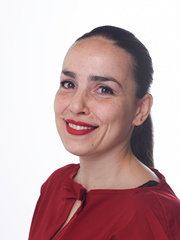
Amel Bouder has held a PhD in Archaeology since 2021, with a specialization in the Africano-Roman Antiquity. Her doctoral degree was obtained under a joint supervision between the University of Algiers II and Aix-Marseille University (CNRS-CCJ), within the framework of the Algerian-French cooperation program Profas B+. Her research focuses on Roman iconography, a field in which she specialized throughout her academic training, as well as on iconoclasm, spolia, and the transformation of urban landscapes in Antiquity. These themes — iconography, spolia, iconoclasm, and urban transformation — are part of contemporary debates around visual memory, heritage practices, and the materiality of power. Her approach combines archaeology, epigraphy, and cultural studies, with a particular focus on the circulation of materials and artistic forms across the northern and southern shores of the Mediterranean. As a field archaeologist, she has taken part in several excavation campaigns in Algeria, Tunisia, and France. She has also taught at the Institute of Archaeology at the University of Algiers II, as well as at the University Center of Tipasa, where she organized a doctoral seminar in 2022 dedicated to the challenges and benefits of pursuing a PhD. She has presented her work at numerous international conferences, including in Algeria, France, Italy, Serbia, and Germany.
Since 2019, she has been a member of the EpiCherchell project, dedicated to the study of ancient inscriptions from Caesarea (Cherchell), where she contributes as a specialist in iconography. This work led to a first collective publication in 2024: Corpus des inscriptions antiques de Caesarea Mauretaniae (Cherchell, Algérie). Caesarea à l’époque des rois de Maurétanie (Paris, Études d’Antiquités Africaines). In 2024, she also joined the project Stadtbeziehungen – Netzwerk zur Erforschung der Städte im antiken Nordafrika, based at the University of Bonn, which focuses on the study of urban dynamics in ancient North Africa.
Her academic trajectory has been supported by several predoctoral and postdoctoral grants and research mobility programs, including three predoctoral monthly grants from the École Française de Rome, two Séjours Scientifiques de Haut Niveau awarded by the French Embassy in Algeria, and two fellowships at the RomanIslam Center of the University of Hamburg (2022–2023). These latter stays allowed her to develop two distinct projects: one on the reuse of bas-reliefs in Numidia during Late Antiquity; the other on the circulation of marble in North Africa and Iberia, between local exploitation and importation. The latter project resulted in a publication and the organization of an international workshop on current archaeological research in Algeria, in collaboration with Prof. Sabine Panzram and Stefan Ardeleanu. Amel Bouder was later awarded a fellowship from the Berliner Antike Kolleg (2023–2024), which she spent at the Freie Universität and the German Archaeological Institute (DAI) in Berlin. Her research focused on conflicts and their resolution, through the case study of stelae from Theveste, understood as collateral damage of such conflicts. In 2024–2025, she received a fellowship from the Fritz Thyssen Foundation to carry out a project on two stelae collections from Mopth and Novar. Preliminary results of this research were published in 2025 in the journal Frontière (CNRS).
Amel Bouder has also authored several scholarly publications, available on her Academia and ResearchGate profiles, reflecting the richness and diversity of her work on iconography, epigraphy, archaeology, and the role of marble in ancient North Africa. Alongside her academic path in archaeology, she also holds a Bachelor's degree in Management Sciences, with a focus on administrative information systems, from the University of Algiers III.
|
Dr Bouder about her work at the CSMC: During my stay at the CSMC, I aim to focus on my project entitled 'Roman Statues and Their Inscriptions in Algeria during Late Antiquity: Reuse and Political Control of Public Spaces'. This project seeks to investigate the ways in which the bases of statues were reused during Late Antiquity, either incorporated into new constructions or used as new supports for subsequent statues. In the latter case, the primary inscription is sometimes erased, while in other instances, it is preserved and placed alongside the new inscription. This practice may be interpreted in various ways, possibly as a means of legitimizing political authority or of marking the different stages in the statue’s life history. When inscription bases are reused in constructions such as baths or Byzantine fortresses, they often remain intact, allowing us to trace their original context and identify the statue itself. Numerous examples from Roman Algeria, such as those in Thamugadi, Lambaesis and Thubursicu Numidarum, testify to these various practices. By examining well-documented and precise case studies, it is possible to understand the rationale behind these differing attitudes towards inscriptions, as well as the statues, which were often defaced or completely destroyed. At the CSMC, my objective is to address these questions in depth, refining my knowledge by engaging with other permanent and visiting researchers within the cluster, particularly those working within Research Field B: Inscribing Spaces. I also aim to broaden my understanding of inscription and writing cultures from around the world by attending the interdisciplinary seminars and workshops hosted at the Cluster. Finally, I plan to finalize several ongoing publications and prepare for future projects, of which the one at the Cluster is a part. |
Dr Zhenzhen Lu (April 2025 – June 2025)

Zhenzhen Lu is an Assistant Professor of Chinese at Bates College (USA). She is the author of The Vernacular World of Pu Songling: Popular Literature and Manuscript Culture in Late Imperial China (Brill, forthcoming), which examines the local transmission of literature in the manuscripts of village scholars from a rural northern Chinese locale in the 17th to early 20th centuries. As a researcher at CSMC in 2017–2019, she has also published articles on scribal publishers of entertainment literature in 19th century Beijing, including a longer article in manuscript cultures. During her stay at the Centre in spring 2025, she plans to further explore the topic of scribal circulation of Chinese literature in the 18th and 19th centuries, focusing on the case of the novel Hongloumeng (The Story of the Stone).
Dr Samuel Thrope (March 2025 – August 2025)
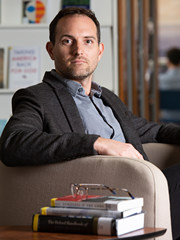
Dr Samuel Thrope is Curator of the Islam and Middle East Collection at the National Library of Israel. He earned his doctorate at the University of California, Berkeley. A widely published author and translator, Thrope has written for both scholarly journals and popular newspapers and magazines. He is the translator of Iranian author Jalal Al-e Ahmad’s 1963 Israel travelogue The Israeli Republic (Restless Books, 2017) and, with Domenico Agostini, of the ancient Iranian Bundahišn: The Zoroastrian Book of Creation (Oxford University Press, 2021). He is also the editor, with Roberta Casagrande-Kim and Raquel Ukeles, of the exhibition catalog Romance and Reason: Islamic Transformations of the Classical Past (Princeton University Press, 2018), and with Raquel Ukeles, Hezi Amiur, Yoel Finkelman, and Stefan Litt of 101 Treasures of the National Library of Israel (Scala, 2023), winning of the 2024 National Jewish Book Award. He is also the editor, with Marina Rustow and Stephanie Leutscher, of A. S. Yahuda as Cultural Broker: Between Near Eastern Philology and the Manuscript Trade (De Gruyter, forthcoming).
|
Dr Thrope about his work at the CSMC: The history of the Jews of Iran, one of the oldest Jewish communities in the diaspora, stretches from the biblical period to present-day Tehran, Tel Aviv, Los Angeles, and Hamburg. One of the many fruits of the encounters between Jewish and Iranian cultures throughout this long period is the Judeo-Persian language—or, it might be better to say, languages, encompassing as it does various forms and dialects of Persian, past and present. Like all Jewish languages, Judeo-Persian in all its forms is characterized by the incorporation of Hebrew and Jewish Aramaic loanwords in a Persian linguistic structure and by a unique, and sometimes archaic, grammar, lexicon, and syntax. |
Dr Elena Hertel (October 2024 – April 2025)
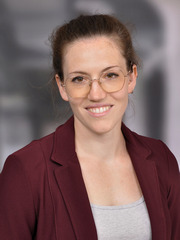
Elena Luise Hertel is an Egyptologist with a research interest in ancient Egyptian writing culture. After studying in Germany and the Netherlands, she received her PhD in Egyptology from the University of Basel in 2024. Her research focuses primarily on texts written in the ancient Egyptian cursive scripts Hieratic, Abnormal Hieratic, and Demotic, with an emphasis on aspects of materiality and writing across media and a historical focus on the Late Bronze and Iron Ages. After coming to the Centre for the Study of Manuscript Cultures with the Petra Kappert Fellowship, she will stay at the University of Hamburg with her new project entitled ‘Stone Carved Manuscripts – The Use of Cursive Script on Stelae as a Phenomenon of Cultural Change in Egypt’s Third Intermediate Period’ funded by the Swiss National Science Foundation.
|
Dr Hertel about her work at the CSMC: During my time at the CSMC I plan prepare my new project for which I investigate the use of the ancient Egyptian cursive script hieratic on stelae. In particular, I would like to benefit from the interdisciplinary environment and make connections with scholars in other fields who are interested in the topic of script used outside its usual context and medium, in order to broaden my research perspective and plan future collaborations. I am also using this time to finalise some publication work and to set up the technical requirements for my new project, which will involve 3D scanning of the stelae and their inscriptions. |
Dr Ciro Giacomelli (February 2024 – March 2024; September 2024 – October 2024)
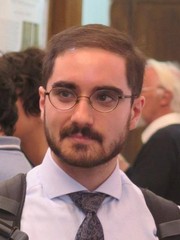
Ciro Giacomelli (PhD 2018, Padua-Paris EPHE-PSL) is currently a Ricercatore (Researcher) in Classical Philology at Padua University. His doctoral dissertation, devoted to the manuscript transmission of the Pseudo-Aristotelian Mirabilia, was published as a book in 2021 (Berlin-Boston, De Gruyter, Commentaria in Aristotelem Graeca et Byzantina, Series Academica). He expanded on this research with a critical edition of the Greek text, accompanied by a philological commentary, published in 2023 by the Accademia Nazionale dei Lincei in Rome (Supplemento al ‘Bollettino dei Classici’). In 2022, he also published a critical edition of a Renaissance translation of the same text (Florence, SISMEL, Edizione nazionale delle traduzioni dei testi greci in età umanistica e rinascimentale). Ciro was a Summer Fellow at Dumbarton Oaks in Washington, D.C. (2018) and held a fellowship in Padua from 2018 to 2020. During this time he also contributed to the Berlin Academy project ‘Commentaria in Aristotelem Graeca et Byzantina’, where he described over 100 manuscripts that are freely accessible in the project’s database. His research interests include the manuscript tradition of the Aristotelian Corpus, Greek palaeography, Greek studies during the Italian Renaissance, and collections of Greek manuscripts. A complete list of his publications is available here.
|
Dr Giacomelli about his work at CSMC: During my stay at the CSMC I worked in close cooperation with Professor Dr Christian Brockmann and Dr José Maksimczuk on the study of the manuscript transmission of Aristotle’s Organon, focusing on 15th century manuscripts and production contexts. The first part of the four-month term in Hamburg helped Maksimczuk and me finalizing the production of a paper on the activity of the so-called Anonymus 11 Harlfinger, a Byzantine scribe from the 15th century who copied an important witness of George Scholarios’ scholia to the Ars Vetus in the manuscript Firenze, Biblioteca Medicea Laurenziana, Plut. 59.17. Georgios Scholarios (ca. 1400 – ca. 1473), better known with the name Gennadios, was an influential intellectual figure of 15th century Constantinople and in 1453 he ascended to the patriarchal throne of Constantinople. Thanks to a wide-ranging codicological, paleographical and philological investigation, it was possible to finally give a name to the (until now) anonymous scribe. The paper is now in the process of being published in the international peer-reviewed journal “Scriptorium”. In the second part of my stay, we will focus on the content of a short introduction to Aristotle’s Categories transmitted in the already mentioned Laurentianus Plut. 59.17 and in Oxford, Bodleian Library, Barocci 87: both manuscripts stemmed from a copy of the Organon annotated (and most likely also copied) by George Scholarios and transmit what seems to be his preliminary notes on the Aristotelian text, later expanded and enriched in the longer commentaries to the first treatises of the Organon that Scholarios published around 1435. Currently, Brockmann, Maksimczuk, and I prepare a paper on Scholarios’ notes on and personal manuscript of Aristotle’s Categories. I also benefited from discussion with different members of the Cluster and especially the RFG. This exchange proved relevant to complete two papers on notebooks and personal manuscripts of some relevant Byzantine scholars (Nikephoros Gregoras and the historian Doukas). |
Professor Dr Dr Jian Qu (June 2024 – August 2024)
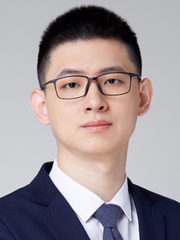
Qu Jian is Associate Professor of Law at China Agricultural University, Beijing, China. He holds an M.A. in Law from Tsinghua University, a Dr. phil. from Heidelberg University and a Dr. iur. from KU Leuven. He was also a visiting researcher/student at the Max Planck Institute for European Legal History, Frankfurt am Main (2018) and Sciences Po, Paris (2014). His research interests lie in the areas of legal history and legal theory, the studies of contract manuscripts and contract law, trust law, and comparative law. He has in-depth expertise in the study of the Qingshui River Manuscripts and is the author of two award-winning books: Social Order through Contracts: A Study of the Qingshui River Manuscripts (Springer, 2021) and Taking Promulgated Words as Law: Collation, Annotation, and the Study of ‘Records of the Procurement of Imperial Timber (Huamulan, 2019), for which he won the ‘Puruo Prize for Young Scholars in Legal History’ and the biennial ‘Zeng Xianyi Prize for Outstanding Monographs on Legal History’. He has recently published his third book, sponsored by the National Publication Foundation of China, Establishing Words: The Culture of Contracts in the Chinese Legal Tradition (Kongxuetang, 2024).
|
Professor Qu about his work at CSMC: During my stay at the CSMC, my work will be focused on a project titled ‘The manuscript culture of contracts in the Qingshui River society of southwest China, c. 18th–19th centuries’. This project will try to shed light on the social life of contracts, i.e., how contracts were (re-)produced, modified, used, and archived/terminated by local communities of the mountainous areas along the Qingshui River in southeast Guizhou with the aim of better understanding the materiality of contracts in late imperial China. |
Professor Dr Li Feng (June 2024 – August 2024)
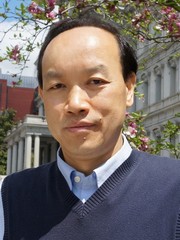
Li Feng is Professor of Early Chinese History and Archaeology at Columbia University, as well as the Faculty Director of the Tang Center for Early China. He received his MA from the Institute of Archaeology of CASS in 1986, and PhD from the University of Chicago in 2000. He is a member of the Advisory Board of the CSMC in 2024–2027, and a visiting scholar at the CSMC from 1 June to 31 August 2024.
Li Feng is both a historian and an archaeologist with long-time academic and cultural experiences in Asia and the West. As a field archaeologist, he led Columbia’s first international collaborative archaeological survey and excavation in China in 2006–2011. As a historian, his work focused on bronze inscriptions and Western Zhou history. His research interests extend over such issues as the rise of complex society, first bureaucracies, early writing and epigraphy, and economic dynamics of early state and empire.
His published books include Landscape and Power in Early China: The Crisis and Fall of the Western Zhou 1045–771 BC (Cambridge 2006); Bureaucracy and the State in Early China: Governing the Western Zhou (Cambridge 2008); Writing and Literacy in Early China (co-edited; UW Press, 2011); Early China: A Social and Cultural History (Cambridge 2014); Studies of Bronzes and Inscriptional Calligraphy (Shanghai Classical Books 2018); Guicheng: A Study of the Formation of States on the Jiaodong Peninsula in Late Bronze-Age China, 1000–500 BCE (co-edited; Science Press 2018). In recent years, Li Feng is undertaking the writing of a new book titled The Economic History of Late Bronze-Age China.
|
Professor Li Feng about his work at CSMC: During my term at the CSMC in 2024, I am working on a paper titled ‘From Royal Order to Lineage Crafting: The Use of Text Template in the Creation of Western Zhou Bronze Inscriptions’. The paper moves the issue of text template to the center of concern, and offers a systematic investigation into the social and intellectual roles of text template in the Western Zhou period (1045–771 BCE) of China. In doing so, it paves a new path to understand the process of text production and the political and social meaning of writing in the late Bronze Age. |
Professor Dr Elisa Barney Smith (June 2024 – July 2024; October 2025 – November 2025)
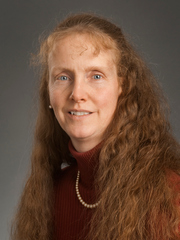
Elisa Barney Smith is a professor at Luleå University of Technology (LTU), Sweden, which she joined after a 22 year career in the Electrical & Computer Engineering department at Boise State University in Boise, Idaho, USA. She is in LTU’s Machine Learning subject within the Department of Computer Science, Electrical and Space Engineering, Embedded Internet Systems Lab (EISLAB). She received a B.S. in Computer Science and the M.S. and Ph.D. degrees in Electrical, Computer and Systems Engineering all from Rensselaer Polytechnic Institute, Troy, NY, USA.
Professor Barney’s main research interests are image processing and machine learning. She applies these primarily to document imaging as well as to facilitate image processing for disparate areas from biomedical image processing to materials science research to soil remediation evaluation. Her research in document analysis includes developing models of the degradations produced during document image acquisition, and analysing the defects that can be produced by the models, ballot image processing, handwritten Indic script recognition, and historical document image processing. Some of this work was featured in a TEDxBoise talk (available on YouTube).
Professor Barney has worked on numerous cross-disciplinary, multi-institutional, national and international project teams. Her expertise has given her invitations as a paid guest scientist at the NATO Saclant Center in Italy, the Ecole Nationale Supérieure des Télécommunications in Paris, France, LORIA in Nancy France and the Technical University Dortmund in Germany. Professor Barney co-authored a textbook on machine learning. She has received NSF, NASA, and industry funding, including a prestigious NSF CAREER award.
Elisa Barney Smith is a member of International Association of Pattern Recognition (IAPR) and a Senior Member of IEEE and SPIE. She is past chair of the IEEE Boise section, past IEEE Region 6’s North East Area chair, and the 2019 & 2020 IEEE (global) Student Activities Committee (SAC) Chair. She is currently Vice-chair of the Sweden Section Signal Processing Chapter and an IEEE Computer Society Distinguished Visitor.
|
Professor Elisa Barney Smith about her work at CSMC: During my stay at the CSMC I am looking forward to meeting new people and finding new projects where skills in computer science, image processing and machine learning can be applied. I am eager to begin new projects which I hope will last beyond my time in Hamburg. |
Emad al-Din Sheikh al-Hokamaee (March 2024 – April 2024)

Contact(emad_hokamaii"AT"yahoo.com)
Emad al-Din Sheikh al-Hokamaee, Head of the ‘Epigraphy and Archives’ section at the Institute of Archaeology, University of Tehran, is a visiting scholar at the CSMC between 15 March and 15 April 2024.
Mr. Sheikh al-Hokamaee has authored more than one hundred articles on epigraphy, seals, paper, manuscripts, and archival documents of Islamic Iran, spanning from the early Islamic period up to the Qajar period. His notable monographs include the catalogue of the Ardabil documents, the most important series of judicial documents from Medieval Iran (Fihrist-ī asnād-i buqʿa-yi Shaykh Ṣafī al-Dīn Ardabīlī, 2009), and an edition of notarial documents contributing to the history of architecture (Asnād-i miʿmārī-yi Īrān, 2 volumes, 2009-10, second volume edited with I. Afshār). His latest books explore the evolution of epistolary writing in pre-modern Iran (Taḥawwul dar ādāb-i kitābat wa tarassul, 2020, with M. ʿUmrānī) and the local history of Southern Iran (Tārīkh-i Khalīj-i Fārs, 2024, with ‘A. Khayrandīsh). Since 2019, he has been a regular contributor to the scholarly journal Bokhārā with a series called ‘Awrāq-i sangīn’ dedicated to newly discovered inscriptions in Iran.
His most recent publications in English include (with D. Durand-Guédy) ‘The Deed of Sale of Bint Toghrïl (666/1267): a First In-Depth Study of the Ilkhanid Private Documents from the Mausoleum of Shaykh Ṣafī in Ardabil’ (JESHO, 67/1-2, 2024) and ‘The Inauspicious Rectangular in Iranian Scribal Practice’ (in F. Csirkés and B. Péri, eds., Mongols, Tatars, and Turks in the Persianate World. Festschrift in Honor of István Vásáry, Leiden, 2024).
Mr. Sheikh al-Hokamaee has conducted numerous teaching programmes on the reading of archival documents and calligraphy. Outside Iran, he delivered lectures at EPHE (Paris, 2008) and served as a lecturer at Philipps Universität Marburg from 2012 to 2014.
|
Emad Sheikh al-Hokamaee about his work at CSMC: During my stay at the CSMC, I will finalise an edition project on ‘Muḥammad Ṭāhir Iṣfahānī’s Ṣarīḥ Al-Milk, an Inventory of the Deeds Purchased by the Mausoleum of Shaykh Ṣafī in Seventeenth Century Iran’. I will also teach a masterclass on sigillography (18–19 March), take part in the workshop on ‘Manuscripts with Sample Letters in Late Medieval Eurasia’ (8–9 April) and give a Thursday Lecture on 12 April. |
Professor Dr Arianna D'Ottone (August 2023 – January 2024)
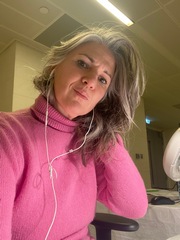
Professor at Sapienza University of Rome, Arianna D’Ottone is a worldwide renowned specialist in the Arabic written culture, teaching Arabic Palaeography, Codicology and Numismatics as well as Arabic Literature. She is Director of the Journal of Islamic Manuscripts and member of various editorial boards of international scientific journals, among which: Journal of the Economic and Social History of the Orient – JESHO and Al-Qantara – AQ – as well as book series (Transcultural Medieval Studies).
She has been appointed as a fellow, in Italy and abroad: at the Scuola Superiore di Studi Avanzati of Sapienza – University of Rome (2014-2020); at the Centre for the Study of Manuscript Cultures (CSMC), Hamburg (Germany) (2023-24) and currently she is Marjorie Bond Fellow at the Wilson Library - Chapel Hill (NC), USA (2024-25). Visiting scholar at the Centre for Middle Eastern Studies (CMES) in Berkeley (2022), she is acting as a consultant for various international museums and institutions, among which: the National Museum of Qatar (Doha) and the National Museum of China (Beijing).
In 2018 she has been awarded with the Samir Shamma Prize by the Royal Numismatic Society (London, UK) for her catalogue of the Arabic coins in the Italian Royal Collection.
Prof. D’Ottone has been leader of intensive courses on Codicology, Palaeography, and Numismatics in several countries: in Mali, at the Ahmed Baba Institute of Higher Learning and Islamic Research, Timbuktu and Bamako; in the Kingdom of Saudi Arabia, where she lead the First Saudi Arabia Codicology Workshop – organised in collaboration with The Islamic Manuscript Association (London) and the Barakat Trust – Jeddah, 28 February-4 March 2023; in The Netherlands, at Leiden University.
Prof. D’Ottone authored groundbreaking research especially in the rediscovery of the Damascene Qubbat al-khazna manuscript material and in the study of the collection of wooden matrices for block-printing once belonging to the Typographia Polyglotta, the Propaganda Fide printing press.
Among her recent publications:
In Defence of Arabic Palaeography, «Journal of the Economic and Social History of the Orient», 66 (2023), pp. 925-951
Early Qurʾanic Scrolls and their Links to the Christian Manuscript Tradition, «Journal of Late Antique, Byzantine and Islamic Studies» 1-2 (2022), pp. 118-132.
As (co-)editor: Paleography Between East and West. Proceedings of the Seminars on Paleography held at Sapienza – University of Rome, edited by A. D’Ottone Rambach, Pisa-Roma, Fabrizio Serra Editore, 2018 - volume of supplement n. 1 of «Rivista degli Studi Orientali» n.s. XC (2017) ISBN 978-88-3315-133-5
The Damascus Fragments: Towards a History of the Qubbat al-khazna Corpus of Manuscripts and Documents, edited by A. D’Ottone Rambach, K. Hirschler and R. Vollandt, Beirut, Ergon 2020 (Beiruter Texte und Studien, 140)
More research available at: https://uniroma1.academia.edu/ariannaDOTTONE
|
Professor Dr D’Ottone about her work at the CSMC: During my stay at the CSMC, I will on the Arabic script and pseudo-script details in the mosaic of the Roman medieval basilica of St. Maria in Trastevere (first half of 12th c.) and write an innovative piece of research: When Popes Wore Arabic Clothes. Arabic Script and Pseudo-Script in the Mosaics of Santa Maria in Trastevere (Rome, 12th century): A Mediterranean Perspective, «Arte Medievale» (2024), pp. 209-230. This contribution, numismatic, epigraphical, documentary and manuscript evidence is considered to give a historical context and a proper cultural meaning to the presence of these Arabic epigraphic ornaments in transfer in one of the major basilicas in the city of the Pope. |
Professor Dr Marco Franceschini (May 2023 – June 2023)
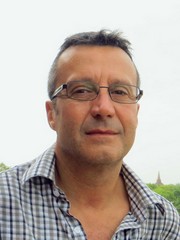
Marco Franceschini is Associate Professor at the University of Bologna. He obtained his PhD at the University of Turin (2005) with a research on Vedic studies (An Enhanced Vedic Concordance, Harvard University Press, 2007). Later on he focussed his research mainly on Indian classical poetry (kāvya) composed in Sanskrit (critical edition and translation of the Padyacūḍāmaṇi of Buddhaghoṣa, 2010; eight more articles in later years) and on South Indian palaeography and codicology, with a special interest for the Grantha script and the paratexts in manuscripts written in the Grantha and Tamil scripts (A Study on Scribal Colophons of Manuscripts Written in Tamil and Tamilian Grantha Scripts, 2016; five more articles in later years).
He has spent periods of research in India (Visiting Scholar at the EFEO, Pondicherry, 2008, 2009 2012), UK (University of Cambridge, 2013, 2014) and The Netherlands (Scaliger Fellow, Leiden University, 2015). He has taken part and is still participating in several international projects, based in Cambridge (UK), Delhi, Hamburg, Hamburg/Pondicherry, Naples L'"Orientale", Hamburg/Paris, Bologna.
He is a member of the Board of Directors of the Associazione Italiana di Studi Sanscriti (AISS).
|
Professor Dr Franceschini about his work at CSMC: During my stay in Hamburg, I will focus on the study of colophons in manuscripts hailing from the Tamil-speaking area of India, which I carry on in collaboration with PLMPI. This work will help highlight hitherto undetected scribal patterns that will eventually allow us to better appreciate the production and circulation of manuscripts in this important cultural area. Such an activity is specifically propaedeutic to the research goals of PLMPI, in particular in respect to its future mission to India, in order to select which palm-leaf manuscripts to analyse in the collection of more than 8,500 manuscripts held at the French Institute of Puducherry (IFP). |
Professor Dr J.R. Osborn (February 2023 – March 2023)
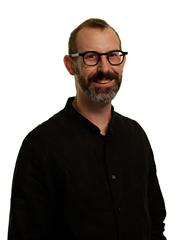
J.R. Osborn is Associate Professor of Communication, Culture & Technology (CCT) and Co-Director of the Iteration Lab at Georgetown University. He is both a scholar and experimentalist of communication. His work explores comparative media, semiotics, visual technologies, and design aesthetics. Dr Osborn’s book Letters of Light: Arabic Script in Calligraphy, Print, and Digital Design (2017, Harvard University Press), which follows the story of Arabic script from the calligraphic tradition to the Unicode standard, received the 2018 British-Kuwait Friendship Society Book Prize and an Honorable Mention for the 2018 Albert Hourani Book Award from the Middle East Studies Association (MESA). He is also the co-author, with Bennetta Jules-Rosette, of African Art Reframed: Dialogues and Reflections on Museum Culture (2020, University of Illinois Press), and he has published a number of articles on design education and pedagogy. Dr Osborn holds a PhD in Communication and a Certificate in Ethnographic Film from the University of California-San Diego.
|
Professor Dr Osborn about his work at CSMC: While at CSMC, I will develop Diagrammatica, an online archive of diagrams and visualizations. The project emphasizes the diagram as a means of spatial reasoning and visual communication that iconically represents conceptual and methodological relations. I seek to contribute to a growing interdisciplinary interest in diagrams, particularly the intersection of manuscript practices and the iconicity of inscription. Emphasizing the diagram opens new horizons in archival research, the sociology and genealogy of knowledge, and intellectual exchange. To this end, I also wish to interview a number of CSMC scholars, asking where diagrams appear in their research, what work these diagrams perform, and how the diagrammatic traditions of manuscript cultures might inform future practice. |
Dr Chiara Ruzzier (September 2022 – February 2023)
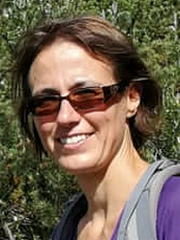
After her degree in Literature at the Università de Trieste (Italy), Chiara Ruzzier obtained a PhD in History at the Université Paris 1 Panthéon-Sorbonne. She then worked as a researcher at the Université de Namur and the Université catholique de Louvain on various projects focussed on manuscript production in medieval Western Europe and on incunabula. A codicologist and book historian, she specialises in the history of the production and use of Latin biblical manuscripts, to which she has devoted several publications, in particular on their material aspect. She has recently published a monograph on the process of miniaturisation of the Latin Bible in the 13th century (Entre Université et ordres mendiants. La production des bibles portatives latines au XIIIe siècle, De Gruyter, 2022).
|
Dr Ruzzier about her work at CSMC: During my stay at CSMC, I am working on a project on the architecture of Latin pandect Bibles during the Early Middle Ages. The project will focus on the relationship between content and material characteristics of the preserved complete Bibles before the year 1000 with the aim of better understanding their role in the history of written culture by analysing the changes in their structure over time and space. |
Dr Susana Torres Prieto (September – November 2022)
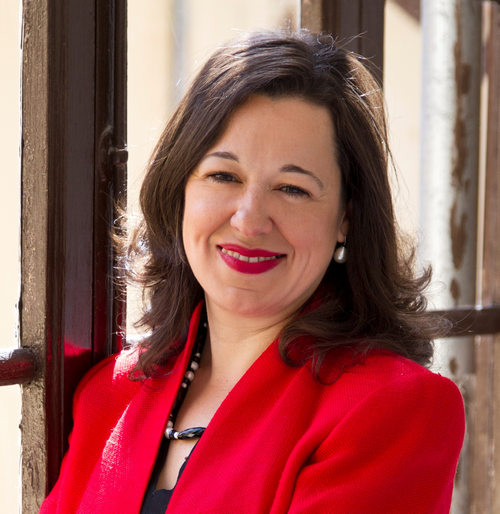
Susana Torres Prieto is Doctor in Slavic Philology and did her postdoctoral studies at the EPHE in Paris. She completed her studies on Slavic codicoloy and palaeography at the Hilandar Research Centre (Columbus-Ohio). She is Associate Professor of Humanities at IE University. Her research focuses on the transmission of literary and religious texts in the Slavic Middle Ages. She directed a project on Critical Editions of Slavic Apocrypha funded by the Spanish Government and her own critical edition of the Slavic Acta Pilati will appear next year in Brepols. She is the Scientific Director of a project focused on mapping Kyivan Rus’ artistic and literary patrimony at the Harvard Ukrainian Research Institute (HURI). She has been Visiting Professor at Arizona State University and the Université de Lausanne and visiting scholar at the University of Cambridge and Harvard University. Her main interests of research focus on the relation between the material means of production and the redefinition of literary and religious generic boundaries as well as the pivotal role of the scribe in Slavic monastic scriptoria.
|
Dr Torres Prieto about her work at CSMC: During my time at CSMC, I would like to analyse in depth the function of scribal colophons is Early East Slavic manuscripts as well as acquire a better understanding of those texts included in the miscellaneous works, whose contextualisation in a wider Byzantine and Oriental tradition has not been fully explored in Slavic yet. Ultimately, a close analysis of the materiality of the artefacts and of the texts included in them should tell us more about the scribal monastic culture in East Slavic. |
Professor Dr Nuria de Castilla (September 2022)
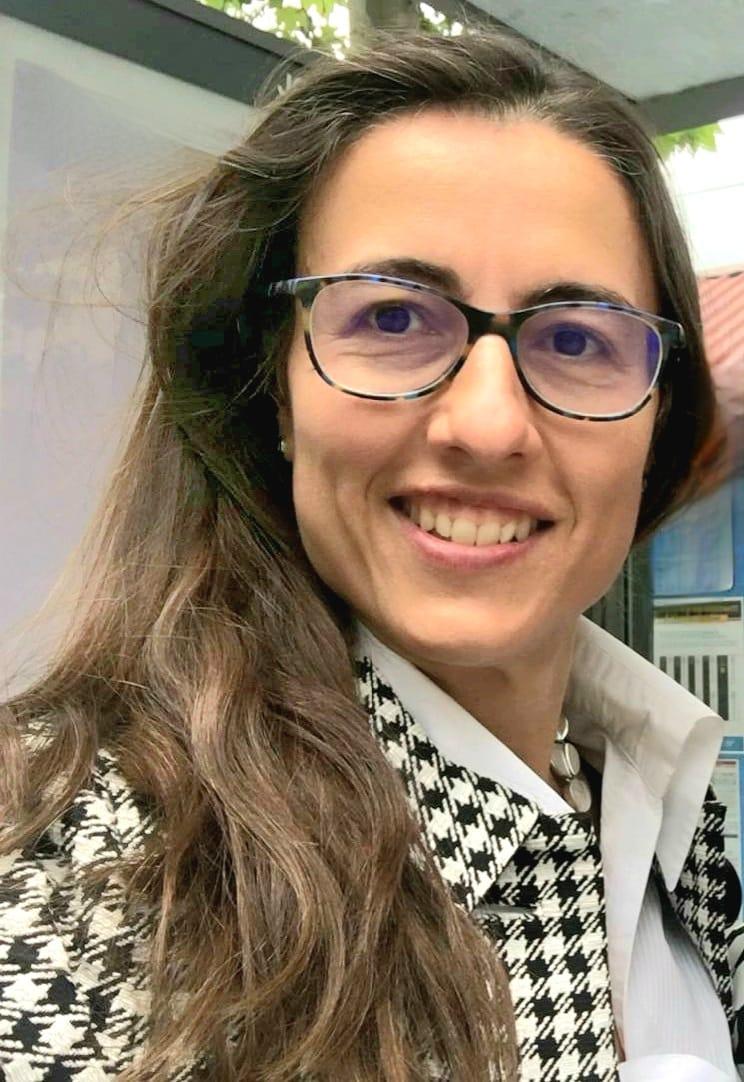
Full Professor at the Ecole Pratique des Hautes Études, PSL (Paris), Nuria de Castilla is a specialist in the History of the manuscript book in Arabic script and Codicology. Prior to being called to her professorship in 2016, she has been teaching and researching at the Complutense University (Madrid), the Spanish National Research Council (CSIC, Madrid), the Pompeu Fabra University (Barcelona), the Warburg Institute (London), the Ecole des Hautes Etudes en Sciences Sociales (Paris), and Carleton University (Ottawa). She has been invited to teach at the Universities of Columbia (New York), Notre Dame (Indiana), Yale (Connecticut), Boulder (Colorado), Princeton (New Jersey), Harvard (Massachusetts), Autónoma de Madrid, L’Orientale (Naples), as well as at the Cambridge University Library, the Biblioteca Ambrosiana (Milan), the National Library of Jerusalem, Real Biblioteca del Monasterio de El Escorial (Madrid), and the Haidara Library of Bamako (Mali).
She specialised in the research on the Qur’anic manuscripts from the Muslim West, as well as on the cultural history of the Mudéjar and Morisco communities (15th-17th c. Spain) through their texts written in Arabic and in Aljamía (linguistic variant of Spanish written in Arabic and exceptionally in Latin script). Nuria de Castilla leads the project Corana. Production of the Qur’an in the Muslim West (12th-17th centuries) and has been the scientific coordinator of the ERC project Saadian Intellectual and Cultural Life (2016-2022).
|
Professor Dr de Castilla about her work at CSMC: During my stay at CSMC, I will focus on the project ‘The transmission of written culture in 15th-16th century Islamic West’, working on my current book on this topic, which combines codicology, ecdotics, cultural and social history, as well as religious and intellectual studies. Moreover, I will finish the edition of the proceedings of the conference on Libraries in the Manuscript Age (in collaboration with M. Friedrich and F. Déroche), which will be published at De Gruyter at the end of 2022 or beginning of 2023. |
Professor Dr Pablo Ubierna (July – September 2022)
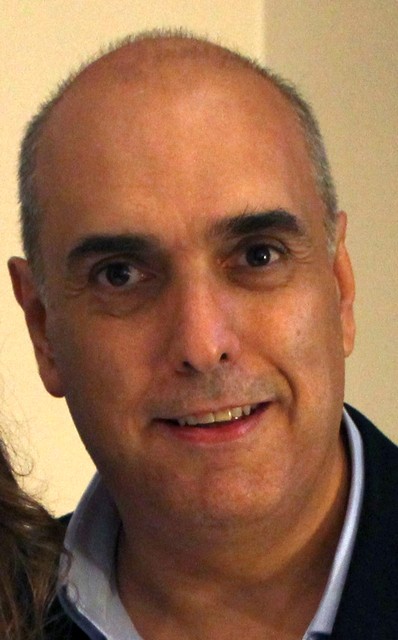
Pablo Ubierna (born Buenos Aires, 1965) is Professor of Byzantine History at the National Paedagogical University (UNIPE) and Director of the Medieval Studies Department at the National Council for Scientific Research (CONICET). After obtaining his BA in History and MA in Medieval Studies at the University of Buenos Aires, he studied Oriental languages and Byzantine History in Paris and he received his Ph. D. in History from the University of Paris Panthéon Sorbonne. Prior to been called to his professorship on Byzantine History, Pablo Ubierna taught Medieval History at the University of Buenos Aires for many years. At CONICET he founded and coordinates the Programme for the Study of Oriental Languages where he has been offering courses on Syriac language and literature since 2008. He is also Editor of the Series Byzantina & Orientalia. Professor Ubierna has extensively researched and published on the Syriac and Byzantine Apocalyptic Tradition.
|
Professor Dr Ubierna about his work at CSMC: While at the CMSC my work will be focused on the Byzantine and Syriac Commentary Tradition, mainly on the Book of Daniel. My aim is to place these Biblical Commentaries as part of the larger Prophetic and Apocalyptic literary traditions. In addition, while in residence, I will also be seeking to develop collaborative projects with colleagues |
Dr Lei Xue (July – September 2022)
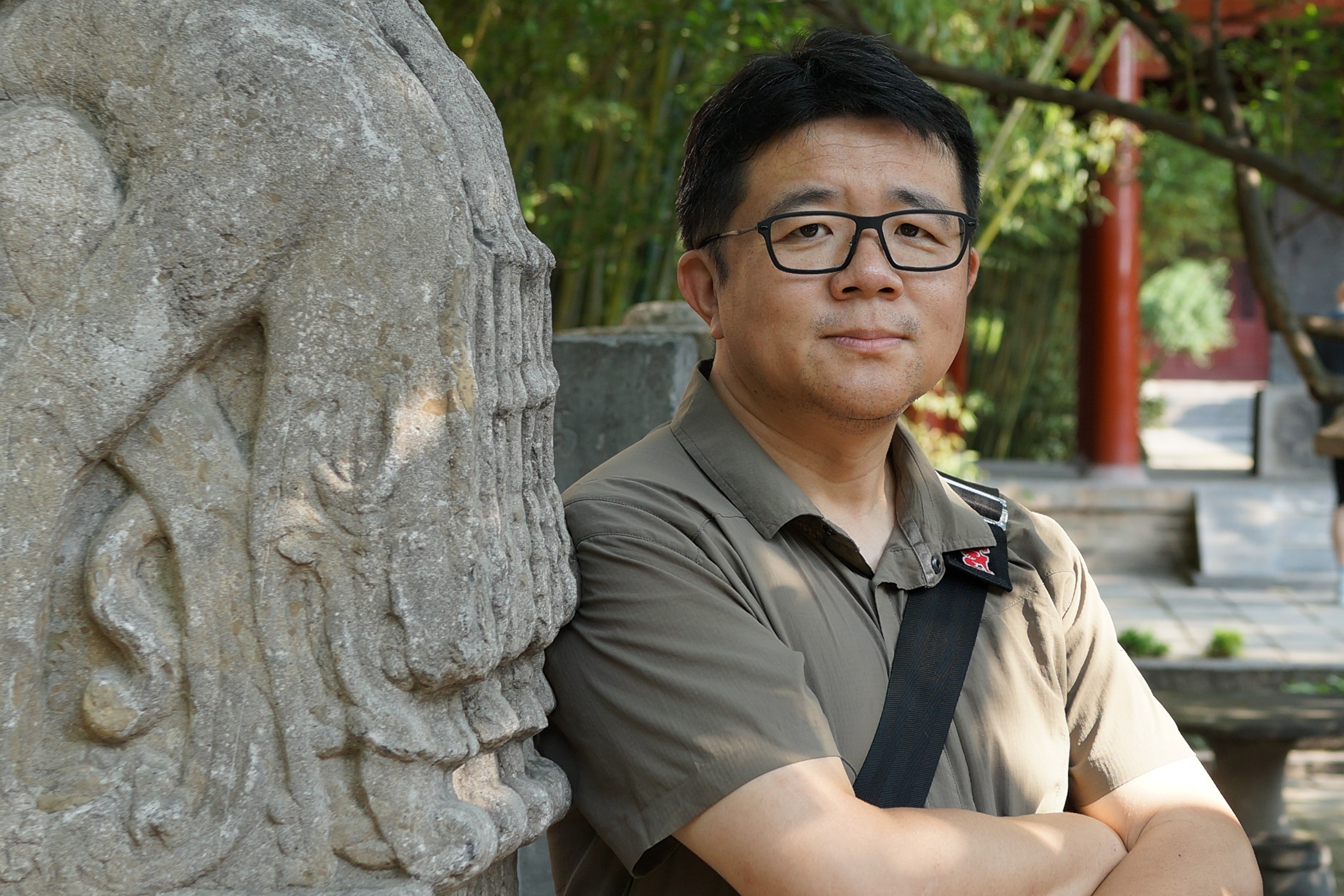
Lei Xue received his PhD in Chinese art from Columbia University in 2009 and is currently Associate Professor of Asian Art at Oregon State University in the US. Also trained as a textual scholar, he completed doctoral courses in Chinese literature and philology at Beijing Normal University in 2001. His publications include Eulogy for Burying a Crane and the Art of Chinese Calligraphy (University of Washington Press, 2019) and articles on Chinese calligraphy and painting. His ongoing book-length project, entitled “Model Letters: Media, Space, and Visuality of Chinese Calligraphy,” inquiries into the social role of fatie, calligraphy model books in the rubbing form that have been circulated and displayed from the seventeenth century to the modern time in and beyond China.
|
Dr Xue about his work at CSMC: At CSMC I will continue to work on my book project on fatie and rubbings and take the opportunity to do field research in major collections in Germany. In the meantime, I expect to draft and present a paper entitled “Script Standard, Text Production, and Cultural Politics in Southern Dynasties China,” which revisits the origin of kaishu, the standard Chinese script, from the perspective of manuscript culture and within the historical context during the fifth and sixth centuries |
Professor Dr Costantino Moretti (June – July 2022)
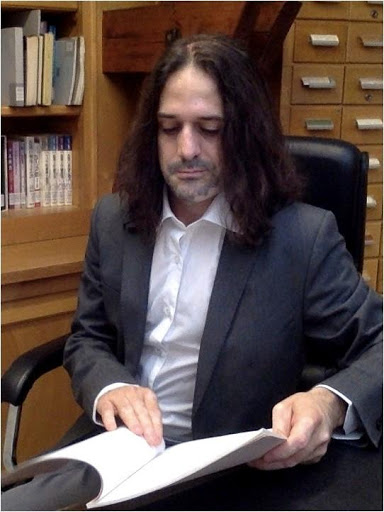
Costantino Moretti is Associate Professor in Chinese Medieval Buddhism and Dunhuang Studies at the École française d’Extrême-Orient (EFEO, Paris). He obtained a PhD (2010) in East-Asian Studies (Chinese Buddhism) from the École Pratique des Hautes Études (EPHE, Paris), where he was appointed Research Associate (2010-2017). He has taken part in various research projects carried out by the East Asian Civilizations Research Centre (CRCAO). His main fields of interest are Dunhuang manuscripts and mural paintings. Since 2010, he organises an annual cycle of conferences in Paris within a collaborative program with the Dunhuang Academy. Since 2013, he teaches an introductory course on Chinese manuscript traditions through the study of medieval Dunhuang documents, and a PhD seminar (since 2017) on the history and philology of Chinese medieval Buddhism at the EPHE. He is the author of Genèse d’un apocryphe bouddhique (Collège de France, 2016), which focuses on a fifth century apocryphon. He co-edited La Fabrique du Lisible (lead editor Prof. Jean-Pierre Drège, Collège de France, 2014). He is also subeditor for the Encyclopaedia of Manuscript Cultures in Asia and Africa (CSMC/Universität Hamburg).
|
Professor Dr Moretti about his work at CSMC: During my stay at CSMC, I worked on my book project on the ‘Shi Lao zhi’, ‘Treatise on Buddhism and Daoism’, chapter 114 of the Wei shu (Book of Wei). I completed the translation of the section of this medieval treatise concerning the history of Buddhism in China (the first French translation of this text), an essential source for studying the key events that characterised the economic and social history of this religious system in northern China during the Wei period. I also worked on a new paper exploring codicological trends in the production of Chinese translations of Buddhist scriptures, with a focus on Dunhuang manuscripts. While at CSMC, I had the opportunity to conduct research at the Berlin Turfan-Collection, to participate in meeting of the ‘Multilingual Written Artefacts’ Group, and to discuss future research projects with other permanent members of the Centre and visiting fellows. |
Professor Dr Javier del Barco (May – June 2022)

Professor Javier del Barco has been senior research fellow at the Spanish National Research Council (2007-2021) and is now associate professor at Universidad Complutense de Madrid. He specialises in Hebrew codicology and paleography, and in the history of Hebrew manuscripts and incunabula from the late Middle Ages to the early Modernity. His research is focused in questions such as the study and interpretation of the book as a historical and cultural object, the relation between the object and the text, practices of reading, using and collecting manuscripts and incunabula, and Hebrew book transmission and circulation. He is currently working on a new book tentatively entitled Forms and Functions of Late Medieval Manuscripts of the Hebrew Bible, and is a partner of the Manuscripta Bibliae Hebraicae project managed from Aix-Marseille Université, devoted to the creation of a codicological, interoperable database of medieval manuscripts of the Hebrew Bible produced in Europe.
|
Professor Dr del Barco about his work at CSMC: While at CSMC, I have been working in my book project tentatively entitled Forms and Functions of Late Medieval Manuscripts of the Hebrew Bible, which aims at analysing a group of late medieval European manuscripts of the Hebrew Bible from a material perspective and in comparison with other linguistic and religious traditions. I wrote the draft of two chapters for this book, and an article on the typologies of Hebrew biblical manuscripts. I have also been in contact with colleagues at CSMC working on biblical manuscripts in other languages than Hebrew, and on the materiality of such artifacts. |
Dr Paraskevi Toma (April – September 2022)
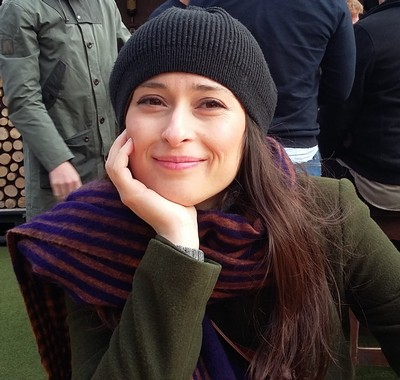
Paraskevi Toma is a Byzantinist based in Münster, Germany. She studied the Classics and Theology at the Aristotle University of Thessaloniki, Greece, and received her PhD from the University of Münster where she was an associate researcher until November 2021. She specialises in critical editions and liturgical poetry, yet her interests and teaching agenda expand into manuscript culture, comparative literature, women’s studies, as well as digital humanities. Currently, she is preparing the first edition of Nikolaos of Otranto’s bilingual (Greek and Latin) three Syntagmata. Further, she examines the relations between Rome and Constantinople after the so-called schism of 1054 as well as the dynamics between politics and religion.
|
Dr Paraskevi Toma about her work at CSMC: While visiting the CSMC, I will continue working on Nikolaos of Otranto’s Syntagmata, but I will focus on the material aspect of the manuscripts transmitting his text. I will apply spectroscopy and DNA analysis to them and try to reconstruct part of their lost cultural history. Moreover, I will participate at the meetings of the Research Fields ‘Multilingual Written Artefacts’ and ‘Creating Originals’ at the Cluster of Excellence, intending to deeper understand linguistic boundaries and the notion of originality. |
Dr Mafalda Toniazzi (April – June 2022)
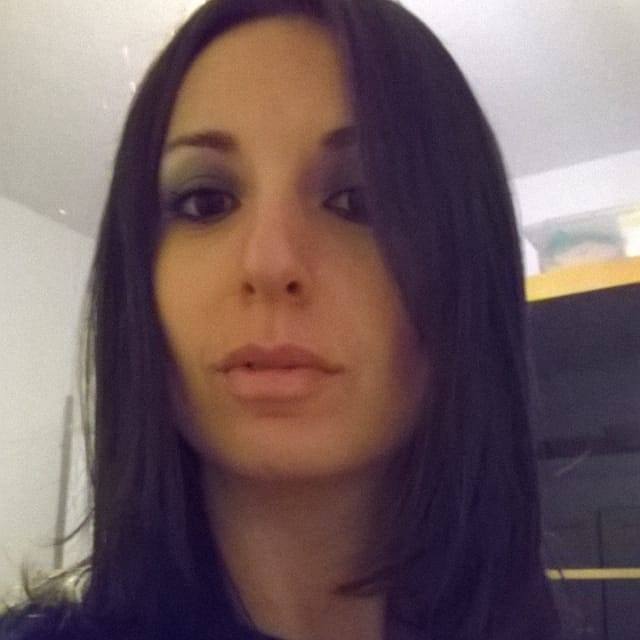
Mafalda Toniazzi (born La Spezia, 1980) is a research fellow and lecturer in the Department of Civilizations and Forms of Knowledge at the University of Pisa. She graduated in Mediaeval History at the University of Florence in 2013 with a thesis entitled I da Camerino: an Italian Jewish family between the 14th and 16th centuries, which was awarded the Vito Fumagalli Plaque as part of the Ascoli Piceno Prize and published by Palumbi Editore in 2015. Her studies focus mainly on the history of Italian Jews in the Middle Ages and Early Modern period. Recently, she co-edited (with Fabrizio Franceschini) the volume Shem in the Tents of Yaphet. Ebrei ed ebraismo nei luoghi, nelle lingue e nelle culture degli altri (Pisa University Press, 2019) and published Reti di relazione nell'ebraismo italiano di fine Medioevo - prima Età Moderna, in M. Romani (ed.), Storia economica e storia degli ebrei. Istituzioni, capitale sociale e stereotipi (secc. XV-XVIII) (Milano Franco Angeli, 2017), Gli ebrei a Scarlino in pieno Cinquecento: prime note di un'indagine, in S. Soldatini, L'Archivio Preunitario del Comune di Scarlino (1439-1833) (Firenze, Polistampa, 2019) and I banchi ebraici tra medioevo ed età moderna: un quadro bibliografico, in P. Delcorno, I. Zavattero (ed.) Credito e Monti di Pietà tra medioevo ed età moderna. Un bilancio storiografico (Il Mulino, 2020).
Since 2009 she has been a member of CISE (Centro Interdipartimentale di Studi Ebraici ‘Michele Luzzati’) at the University of Pisa, with which she actively collaborates, and since 2014 she has been participating in the Italia Judaica project of Tel-Aviv University.
|
Dr Toniazzi about her work at CSMC: While at CMSC, my work has been focused on improving my research skills with respect to the census of Jewish attestations in non-community historical archives, on learning how to study documents through material analysis, and on fully understanding archiving as a complex cultural process. As a researcher with knowledge in Latin Palaeography, I’ve always approached archives exclusively from a historian’s point of view who wants to reconstruct families’ history, economic and prosopographic scenarios, or specific events. Thanks to my stay at CSMC, I extended my research abilities with regard to archiving practices in order to handle archives and documents mainly as a purpose rather than a means. |
Dr Karin Wiedergut (May – July 2021 | October – December 2021)

Karin Wiedergut is a Vienna-based ancient historian and epigrapher. She studied ancient history, archaeology and Jewish studies at the university of Vienna, where she received her masters degree in ancient history with a thesis on the legal disputes of the publicani (tax farmers) with various cities in Greece and Asia Minor during Roman times. She was subsequently part of two consecutive research projects at the Austrian Academy of Sciences, dealing with funerary law and the protection of graves in Southwestern Asia Minor (i.e. the Southwestern part of modern-day Turkey). She received her PhD from Vienna university in 2020 with a thesis on the public archives and notaries in the Roman provinces of Asia and Lycia et Pamphylia.
She is most interested in the social, economic and legal history of Roman Asia Minor, particularly on questions of social stratification and non-elite groups in the cities of the East.
|
Dr Wiedergut about her work at CSMC: While being part of the CSMC, I am continuing my work on the public archives and notaries in Asia Minor, focussing on two specific aspects: (1) the role occupied by the public archives within the municipal framework of the ancient cities, with special regard to the processes of „archiving“ still graspable through the sources, and (2) the interaction between text and monument in the public space, especially the question why individuals were keen on informing the general public on the archival deposition of private documents via an openly displayed inscription. |
Dr Hagos Abrha Abay (March 2021 – February 2022)
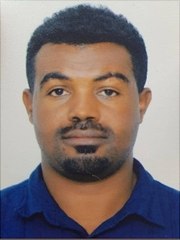
Dr Hagos Abrha Abay received his PhD in Gǝʿǝz Philology with a focus on a critical edition of hagiographic manuscript tradition from Addis Ababa University in 2014. Subsequently, he founded the St. Yared Center for Ethiopian Philology and Manuscript Studies (SYCEPMS) at Mekelle University and served as Assistant Professor and Director of the center until 2019 with a brief stint as Deputy Executive Chief Officer of the Ethiopian Tourism Organization. Following his return to academia, Dr Abay has coordinated manuscripts digitization projects in Tǝgray (Ethiopia) monasteries. In addition to his teaching and research activities, Dr Abay also serves as board chairman of the Wejjerat Development Association in Tǝgray. Furthermore, he is the main organizer of “Mahilete Gumaye”, a cultural initiative for the preservation of endangered cultural values, named after one of Dr Abay’s collections of poems.
|
Dr Hagos Abrha Abay about his work at CSMC: In Tǝgray (Ethiopia), there are hundreds of thousands of medieval Gǝʿǝz manuscripts; most manuscripts, including even the more intensively researched ones, were produced in the form of a codex, consisting of many folios in a quire and bound together. This kind of manuscript has almost become a standardized form of book with a common, consistent pattern. However, still there are several types of non-standardized forms that have trans-textual values between the oral and the written tradition; I call them non-codex manuscripts, which are at times forgotten, typologically complex and very artistic in design and layout. During my stay at CSMC, the aim of my project, therefore, is to investigate the patterns of the formats and contents of the non-codex Gǝʿǝz manuscripts, which, I believe, will contribute to a combined study of anthropology, folklore, and Gǝʿǝz manuscript culture. Researching the usage and archiving system of these types of manuscripts is also one aspect of the aim of the project. |
Dr Imre Galambos (July – August 2012 | May – June 2021)

After having received his Ph.D. from the University of California at Berkeley in 2002, Imre Galambos worked for ten years for the International Dunhuang Project (IDP) at the British Library. In the autumn of 2012, he took on a teaching post at the University of Cambridge, where he is now Reader in Chinese Studies. Initially, his field of research was early China, particularly the scripts of the Warring States period as seen in newly excavated texts, which is the topic of his first book (Orthography of Early Chinese Writing, 2006). However, since then he became interested in the manuscript culture of Dunhuang and his focus changed to the medieval period. His second book, co-authored with Tibetologist Sam van Schaik, analyses a group of manuscripts from Dunhuang that used to belong to a Chinese monk passing through the Hexi region on his way to the holy sites of India (Manuscripts and Travellers: The Sino-Tibetan Documents of a Tenth-century Buddhist Pilgrim, 2012). His third monograph focuses on the Chinese and Tangut material excavated from the abandoned city of Khara-khoto in the deserts of Inner Mongolia (Translating Chinese Tradition and Teaching Tangut Culture, 2015). Finally, his most recent book (Dunhuang Manuscript Culture, 2020) is a study of Dunhuang manuscripts from the ninth and tenth centuries.
|
Dr Imre Galambos about his work at the CSMC: During my stay at CSMC I plan to work on the earliest Buddhist manuscripts that survive in Chinese. These are paper scrolls from the fourth and fifth centuries, which primarily come from Dunhuang and sites in the region of Turfan. Although the texts contained in these manuscripts have been studied extensively by scholars working on Chinese Buddhism, there has been relatively little attention paid to their codicological features and to their significance for the history of the Chinese book. I intend to carry out a thorough analysis of their codicological features and explore the role they played in the spread of the scroll form, which quickly became the dominant book form in the manuscript culture of East Asia for nearly a millennium. Since the majority of these early scrolls are undated, I am also interested in exploring the possibilities of dating them more precisely using codicological, palaeographic and other methods. I believe that the findings of this research will be useful not only for scholars of Buddhist studies but also to researchers working on the history of the Chinese book and material culture in general. |
Professor Dr William G. Boltz (July – August 2018 | April – June 2021)
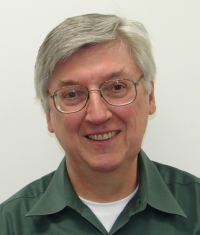
William G. Boltz obtained his PhD degree in Oriental Languages & Literature at the University of California, Berkeley in 1974, having studied there with Professors Y. R. Chao (Chinese language & linguistics), Peter A. Boodberg (Chinese philology), Kun Chang (Chinese linguistics) and Yakov Malkiel (Romance philology and linguistics). From 1972–1975 he was a Junior Fellow of the University of Michigan Society of Fellows. He assumed the position of Professor of Classical Chinese at the University of Washington, Seattle in 1981 and is now professor, emeritus. William Boltz has been a Visiting Guest Professor at the University of Hamburg and was also Visiting Guest Professor at the Institute of Sinology and East Asian Studies at the University of Münster on two occasions as well. He has been a research scholar at the Max Planck Institute for the History of Science, Berlin for nearly two decades. He has been affiliated with the Centre for the Study of Manuscript Cultures and its precursors in one way or another ever since its inception, having participated in the first ʻTomb Text Workshopʼ proposed and organised by Professor Dr Michael Friedrich in the first months of the new millennium (sensu stricto the first months of the last year of the old millennium, viz. 2000), out of which the CSMC has grown.
Boltz’s research focuses on the origin and early development of the Chinese writing system, on the philological analysis and textual criticism of Classical Chinese texts and manuscripts and on Chinese lexicology and etymology.
|
Professor Dr Boltz about his work at CSMC: I will focus on a project titled Early Chinese Manuscripts and the Chinese Writing System, an investigation into how the nature of the Chinese writing system demands an approach to questions of textual criticism and lexicology different from what has been traditional in work with manuscripts written in alphabets, abjads and abugidas. How much do the nature and structure of the Chinese writing system and an understanding of its early formation and developmental history matter in the philological analysis of texts? |
Dr Ulfat Abdurasulov (October – December 2020 | April – June 2021)
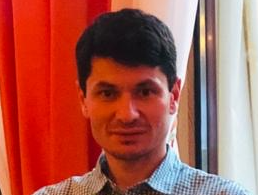
Ulfat Abdurasulov (born 1977 in Uzbekistan) specialises in the history of Islamic Central Asia (seventeenth to early twentieth century), the history of the Russian protectorates in Central Asia, early modern diplomatic history as well as the history of early modern record-keeping and archiving. After completing his Master’s degree in History and Geography at the Tashkent State Pedagogical University, Uzbekistan, in 1999, he completed his PhD in the History of Central Asia at the Institute of History of the Academy of Sciences of the Republic of Uzbekistan in Tashkent, Uzbekistan in 2008. Prior to starting his current position in 2014, Dr Abdurasulov served as a public school teacher, as Junior Research Fellow as well as Research Fellow at the Institute of History. From 2010 to 2013, he held the position of Vice-Director before accepting the position of VolkswagenStiftung Fellow at the institute. From 2014 to March 2020, he was a postdoctoral Research Fellow at the Institute of Iranian Studies of the Austrian Academy of Sciences as part of the START Project ‘Seeing Like an Archive: Documents and Forms of Governance in Islamic Central Asia (18th–19th Centuries)’, funded by the Austrian Science Fund (FWF Der Wissenschaftsfonds).
Dr Abdurasulov is the author of various publications, among them the monograph Seeking Justice at the Court of the Khans of Khiva (19th–early 20th Centuries) that he co-authored with Paolo Sartori. He has been the recipient of several academic awards and scholarships, among them the three-year Research Fellowship of the VolkswagenStiftung for the project The Archives Talk: Writing the History of Colonial Central Asia.
|
Dr Abdurasulov about his work at CSMC: While at the CSMC, the aim of my new project is to examine the abundance of paperwork of the Moscow Main Archive of the Russian Ministry of Foreign Affairs (MGAMID) – regarded by the contemporaries as a repository of the most ancient and most valuable historical artefacts dating back to the medieval princely archives of the Moscow knyazs as well as of materials of the early modern Old Regimes of Pre-Petrine Russia as they related to Central Asia. In doing so, my ambition is to scrutinize the evolving process of selection, ordering and (re)usage of these texts as they reflect the very functions of an imperial archive and to examine processes of knowledge production about Central Asia in seventeenth and early nineteenth century Russia. |
Professor Dr Ronny Vollandt (March – October 2020)
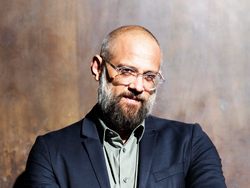
Ronny Vollandt (born 1978 in Arnstadt, Germany) is a professor of Judaic Studies at the Institute of Near and Middle Eastern Studies at the Ludwig-Maximilians-Universität (LMU) in Munich, Germany. After obtaining his MA in Jewish Civilization from the Hebrew University of Jerusalem, Israel, Vollandt completed his PhD in Semitic Philology at the Faculty of Asian and Middle Eastern Studies at the University of Cambridge, UK. Prior to being called to his professorship in 2015, he served as Associated Researcher at the Section Hébraïque at the Institut de Recherche et d'Histoire des Textes of the Centre national de la recherche scientifique (CNRS) in Paris, France, as Fellow in Zukunftsphilologie at the Forum Transregionale Studien e.V. in Berlin, Germany, and finally as Senior Research Associate at the Research Unit Intellectual History of the Islamicate World at Freie Universität in Berlin, Germany.
Ronny Vollandt is the author of numerous articles, edited volumes, encyclopaedia entries, and the monograph Arabic Versions of the Pentateuch. A comparative study of Jewish, Christian, and Muslim Sources. He was also awarded the Alexander-Böhlig-Preis in 2017 and the ARCHES Award for Research Cooperation and High Excellence in Science in 2019. Prior to his Petra Kappert Fellowship, Vollandt held several fellowships, including a position as Senior Fellow at the Maimonides Centre for Advanced Studies at Universität Hamburg in 2018.
|
Professor Dr Vollandt about his work at CSMC: In my current project, I investigate Saadiah Gaon’s (882-942) translation of the Torah into Arabic. The transmission of this text stretches across a period of over a thousand years temporally, across the entire Arabic-speaking world geographically and throughout a variety of communities in terms of religious background. Manuscript copies were produced by Jewish and Christian, but also Samaritan and Muslim scribes, exhibiting considerable modifications over time. I attempt to understand how the unmechanical historical circumstances and the various communities of readers inevitably must have conditioned the surviving, diffusion and modification of Saadiah’s translation in its multiple physical embodiments, the manuscripts. |
Dr Ondřej Škrabal (January – June 2019)
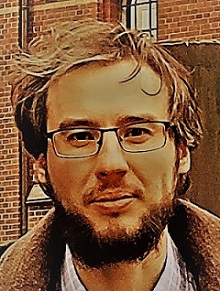
Ondřej Škrabal (born 1985) majored in Sinology at the Charles University in Prague, Czech Republic and in the history of ancient China at Peking University, Beijing, China where he obtained his doctorate with a thesis on the evolution of the pragmatic function of early Chinese bronze epigraphy (eleventh to eighth centuries bce). He was a visiting student at the University of Chicago from 2014 to 2015 and a lecturer in Modern and Classical Chinese, Chinese writing and palaeography at the Institute of East Asian Studies, Charles University from 2015 to 2019.
Dr Škrabal’s main field of research is the cultural history of ancient China, with a strong interest in early Chinese bronzes and their inscriptions, both as historical sources and as material artefacts.
|
Dr Škrabal about his work at CSMC: As a specialist primarily in early Chinese epigraphy, I am interested in the special varieties of writing that emerged in the boundary area between manuscripts and epigraphy. During my stay at the CSMC, I want to address this issue from the perspective of exemplars that were used by artisans during the inscription making. Based on the textual anomalies in the Eastern Zhou epigraphy (770-221 BCE), I intend to reconstruct the properties of such long-perished technical manuscripts used in the bronze workshops and to assess the complexities of the derivative process in which the epigraphic “witnesses” were created based on their handwritten exemplars. I believe that a probe into this boundary area can enhance our understanding of the epigraphic artefacts from pre-imperial China. |
Dr Patrick Andrist (October – November 2018)

CV and publications | Contact
Patrick Andrist (born 1964 in Lausanne, Switzerland) is a researcher in the field of book and biblical history, codicology and religious polemics in antiquity. After a diploma in Computer Science, he wrote a thesis on the style of Demosthenes at the University of Geneva in 1991 and completed a post-doctoral diploma in codicology and Greek palaeography at the Scuola Vaticana di Paleografia, Diplomatica e Archivistica in 1995. In 2001 he obtained his doctorate at the University of Geneva with a text edition and a commentary on the dialogue between Athanasius and Zaccheus. Until 2010 he was a curator of the medieval manuscripts of the Burgerbibliothek Bern. In 2011 he habilitated at the University of Fribourg/Switzerland on the subject of Byzantine forms of production of handwritten books in the context of anti-Jewish polemics (published in 2016). In 2013 he was co-editor of the book La syntaxe du codex alongside Paul Canart and Marilena Maniaci. Since 2014 he has been working as project leader of the ERC research project "ParaTexBib: Paratexts of the Bible, Analysis and Edition of the Greek Textual Transmission" (PI Martin Wallraff), first at the University of Basel and since 2017 at the LMU-Munich. Patrick Andrist has published several scientific catalogues and descriptions of Greek manuscripts in exhibition catalogues and online publications. He has also published numerous works on the history of the Bible and on ancient polemics.
|
Dr Andrist about his work at CSMC: I am planning to complete a chapter for the book on the structure of Greek gospel manuscripts during my time here and the revision of the book "La Syntaxe du Codex" before its translation into English. |
Professor Dr Michael Grünbart (October – November 2018)
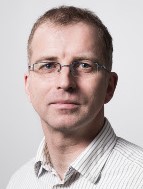
Michael Grünbart (born 1969) studied Byzantine Studies, Classical Philology and Numismatics at the University of Vienna where he received his doctorate in 2000 (Formen der Anrede im byzantinischen Brief vom 6. bis zum 12. Jahrhundert. Vienna 2005). From 1993 to 2008 he headed the Departmental Library for Byzantine and Modern Greek Studies at the University of Vienna; he habilitated at the Ludwig Maximilian University Munich (Inszenierung und Repräsentation der byzantinischen Aristokratie vom 10. bis zum 13. Jahrhundert. Paderborn, 2015) and accepted a professorship in Byzantine Studies at the Westfälische Wilhelms-Universität Münster. He is a member of the board of the Centre for Medieval and Early Modern Studies (Frühmittelalterliche Studien, De Gruyter) and the Deutsche Arbeitsgemeinschaft zur Förderung Byzantinischer Studien (DAFBS; German Association for the Promotion of Byzantine Studies) as well as a member of the advisory board of the Mediävistenverband. He was a Fellow at the Dumbarton Oaks Research Library and Collection, Washington, D.C. (2004) and at the Käte Hamburger Kolleg “Fate, Freedom and Prognostication” in Erlangen (2017). He led projects within the Cluster of Excellence “Religion and Politics” (2009–2017) and the SFB 1150 “Cultures of Decision” (2015–) at WWU Münster.
|
Professor Dr Grünbart about his work at CSMC: In the course of my stay I would like to work intensively with Greek letters in Byzantine manuscripts and pay particular attention to the fluid tradition as well as the collection compositions. This will provide information on the technique of writing letters, the contemporary classification and the collection of these texts. I also plan to complete the manuscript of the Epistularum Graecarum Initia (extension of the Epistularum Byzantinarum Initia, published in 2001). |
Professor Dr Harm den Boer and Professor Dr Carsten Wilke (August 2018)
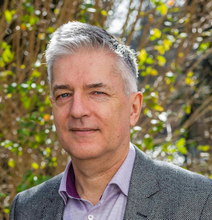
Professor Dr Harm den Boer
Harm den Boer is Professor of Iberoromance Literature at the University of Basel. Den Boer’s research focuses on the literary output and cultural significance of religious minorities and heterodox currents in Early Modern Iberia. After his PhD thesis on the Spanish and Portuguese Literature of the Iberian Jews of Amsterdam (U. Amsterdam 1992), he has extensively researched and published on Iberian Jewish and Converso literature from the Early Modern Period. The results of extended and ongoing bibliographic research are found in Spanish and Portuguese Printing in the Northern Netherlands (1584-1825), the digital collection Sephardic Editions 1550-1820 and articles identifying printers, authors and financers that shed more light on the beginning of the Western Sephardi Diaspora in Northern Europe. Among his main publications on literature are: La literature sefardí de Amsterdam (1996), El Barroco sefardí (together with Kenneth Brown, 2000) as well as other studies on the Spanish Jewish writer Abraham Gómez Silveira (1656-1740) author of a huge oeuvre of manuscript texts. Recently, Den Boer contributed to the edition and study of the Spanish translation of Erasmus’ Moria by Dr. Jorge Ledo (2014), a work long sought-after, of which the Ets Haim Library of the Portuguese Jewish community of Amsterdam has a unique surviving manuscript copy.
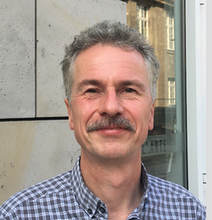
Professor Dr Carsten Wilke
Carsten Wilke is Professor at the Departments of History and Medieval Studies at Central European University Budapest and Director of CEU's Center for Religious Studies. He obtained his doctorate in Jewish Studies from the University of Cologne (1994) and a Diploma in Religious Studies from the EPHE in Paris. Before his professorship in Budapest, he has been a member of research institutions in Mexico City, Duisburg, and Philadelphia. In his books and articles, he has researched intercultural aspects of Jewish religious history in a wide time frame, with focus areas in Iberian Crypto-Judaism, the Sephardic diaspora, and rabbinic reform movements of the nineteenth century. He authored the monograph publications Jüdisch-christliches Doppelleben im Barock: Zur Biographie des Kaufmanns und Dichters Antonio Enríquez Gómez (Peter Lang, 1994); "Den Talmud und den Kant". Rabbinerausbildung an der Schwelle zur Moderne (Olms, 2003); Histoire des juifs portugais (Chandeigne, 2007); The Marrakesh Dialogues: A Gospel Critique and Jewish Apology from the Spanish Renaissance (Brill, 2014); and Farewell to Shulamit: Spatial and Social Diversity in the Song of Songs (De Gruyter, 2017).
|
Professors Dr Den Boer and Wilke about their activity at CSMC: During our fellowship, we have jointly drawn up the plan for a large-scale research project on the vast manuscript literature that circulated in the diaspora communities of the Iberian Jews during the seventeenth and eighteenth centuries. In the research proposal that we have composed during our stay at CSMC and that we are about to submit to funding institutions, we aim at a comprehensive study of these manuscripts, which are mostly written in Spanish and Portuguese, with individual items in Latin, Italian, French, Hebrew, and Dutch. We estimate that about 500 manuscript volumes are still extant in collections world-wide, 30 of which are in the State and University Library in Hamburg. Since we are substantially dealing with texts of a polemical nature, defending the doctrines of Judaism against Christian claims, this literature was forbidden and clandestine; yet it held an important place among Sephardic readers, and it also had a significant (after)life among the philosophers of the Early Enlightenment. Conceptually, our research will reveal the transfer of knowledge and doubt between Jewish, Christian and free-thinking literary circles. Our project will establish an online portal, offered in open access, with a large selection of digitized manuscripts. This website will include state-of-the-art tools from material, paleographical and semantical analysis, which we hope to develop in a future cooperation with the CSMC. |
Professor Dr Scott Reese (May – July 2018)

Scott Reese (born in 1965) is Professor of Islamic and World History at Northern Arizona University, Flagstaff, USA. He holds a PhD in History from the University of Pennsylvania (1996). A historian with a strong interest in Islam in Africa and the western Indian Ocean, Reese focuses specifically on comparative history aimed at breaking down many of the regional and geographical categories currently in use across academia. His main research interests are comparative Sufism, modern Muslim discourses of reform, and the construction of world systems since 1500. He is the author of two monographs, Imperial Muslims: Islam, Community and Authority in the Indian Ocean, 1839–1937 (Edinburgh University Press, 2018) and Renewers of the Age: Holy Men and Social Discourse in Colonial Benaadir (Brill: 2008), and is the editor of The Transmission of Learning in Islamic Africa (Brill, 2004). He is also senior editor of Islamic Africa, a peer-reviewed academic journal.
|
Professor Dr Reese about his work at CSMC: While at CSMC, I will begin work on a new project that examines the development of Arabic-Islamic printing in the western Indian Ocean during the 19th and 20th centuries. This project aims to establish a greater understanding of the print corpus created during the colonial era with the arrival of lino-graphic type in the early 20th century while also developing insight into the impact of print on the intellectual networks of Muslims living under colonial rule. In addition, while in residence, I will also be seeking to develop collaborative projects with colleagues at the Centre aimed at the digitisation and preservation of early print collections in Eastern Africa. |
Dr Marco Heiles (April – September 2018)
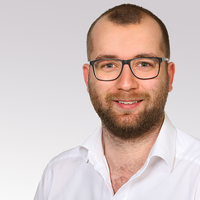
Marco Heiles (born 1986) studied German Language, Literature and Culture and Classical Philology at the Rheinische Friedrich-Wilhelms-Universität Bonn (BA 2009) and majored in German Studies at the University of Oxford (MSt 2010) with a thesis on medieval German multiple text codices. He was a member of the graduate school, of the Centre for the Study of Manuscript Studies and was promoted with a scholarship by the CSMC in 2012–2015. He defended his PhD thesis on German manuscripts of books of sorts (Losbücher) at Hamburg University in 2016. It was published in 2018 in the series Beihefte zum Archiv für Kulturgeschichte under the title Das Losbuch. Manuskriptologie einer Textsorte des 14. bis 16. Jahrhunderts. Marco Heiles taught medieval German language and literature at the universities in Bonn, Hamburg and Düsseldorf and is currently Wissenschaftlicher Mitarbeiter at the RWTH Aachen University. Marco Heiles is preparing a research project on Sexually explicit writing in medieval and early modern German manuscripts and prints (1100–1600).
|
Dr Heiles about his work at CSMC: During my stay at the CSMC I will prepare a research project on sexually explicit writing and complete a series of research articles on the German multiple text manuscript Hamburg, Staatsbibliothek, Cod. germ. 1 from the mid-15th Century. I am especially interested in the scientific service projects at the CSMS (Z01¬–Z03) and I will try to connect and collaborate with all three of them. |
Dr Dick van der Meij (February – March 2018)
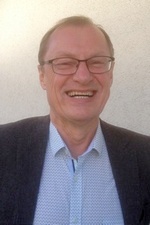
Dr Dick van der Meij (born 1956 in Lisse, the Netherlands) majored in Indonesian Languages and Cultures at Leiden University in 1983 with a MA thesis about secret language use in Jakarta. He defended his PhD thesis at Leiden University in 2002 with a text edition entitled: Puspakrema: A Javanese Romance from Lombok. Apart from other publications pertaining to Indonesian languages, manuscripts and literatures, he has published studies and editions of texts in Javanese (Nabi Aparas [The shaving of the Prophet’s Hair] also from Lombok, 1996), Balinese (on the Abisheka royal ceremony in Gianyar, 1986, Kidung Dampati Lalangon [The Diversion of the Spouses], 2011) and Malay. His latest Malay text edition is The Malay Hikayat Mi‘rāj Nabi Muḥammad. The Prophet Muḥammad’s Nocturnal Journey to Heaven and Hell edited and translated by Th.C. van der Meij and N. Lambooij. Leiden: Brill, 2015. His latest publication on manuscripts is Indonesian Manuscripts from the Islands of Java, Madura, Bali and Lombok published by Brill, Leiden 2017. At present he is editor of the series Bibliotheca Indonesica of Brill with Prof. Edwin Wieringa from the University of Cologne. In 2017, he has continued field work in Bali and his literary preparatory study for a book on Balinese palm leaf manuscripts (to be published with Brill) that focusses on leaf production, writing and many other aspects of palm leaf manuscripts in Bali in the present and in the past seen from the anthropological, philological and material points of view.
|
Dr van der Meij about his work at CSMC: At the CSMC I expect to prepare work for my study of Balinese palm leaf manuscripts in the field. I wish to expand my knowledge about how to proceed with the physical study of palm leaf manuscripts in order to come up with a reliable method of dating and identifying the geographical origins of these manuscripts when colophons are lacking or unreliable. Also I want to use this method to see if the usual classification of Balinese manuscripts in leaf quality in relation to particular texts is indeed valid. |
Professor Dr Karl R. Schaefer (February – April 2017)

Karl R. Schaefer (born 1949) is Professor Emeritus of Librarianship from Drake University in Des Moines, Iowa, USA. He holds a PhD in Near Eastern Studies from New York University (1985) and a Masters in Library and Information Science from the University of Oklahoma (1992). His primary area of interest is medieval Arabic block printing. He is the author of several articles on this subject as well as the first comprehensive examination of extant examples of the craft: Enigmatic Charms: Medieval Arabic Block Printed Amulets in American and European Libraries and Museums, (Brill, 2006). He is currently at work on a second volume meant to collect recently discovered examples between two covers.
|
Professor Dr Schaefer about his work at CSMC: While at CSMC I shall be involved in a number of different activities. First, I am continuing research on my main area of interes--medieval Arabic block printing. While in residence at the Centre, I am planning to visit three different collections which hold examples of Arabic block printing, one in France, one in Germany and one in Denmark. Second, I am participating in two meetings of the Centre’s “Wirkmacht Group,” which is exploring a relatively new approach to ontology known as “agency.” Third, I shall be conducting a two-day workshop in which participants will attempt to create their own printing blocks and make prints from them. Finally, I shall be presenting a lecture on Arabic block printing and the archive. |
Professor Dr Mandana Barkeshli (August – September 2016)

Professor Dr Mandana Barkeshli is a conservation scientist specializing in materials technology of manuscripts and miniature paintings. She is internationally recognized for her discoveries related to traditional preventive measures in Persian manuscripts such as saffron stigmas used as inhibitor to counteract destructive effect of green verdigris pigment in miniature paintings and henna dye used as fungicide in Persian paper dyeing processes between the sixteenth and nineteenth century.
Professor Dr Barkeshli has held various senior academic and museum positions, including as faculty member of the Art University at Tehran and Isfahan as well as the International Islamic University Malaysia, and as first Head Curator of the Islamic Arts Museum Malaysia. She has also been a founding member, a board member of directors and the chairman of the Islamic Manuscript Association at the University of Cambridge as well as an editorial board member of Restaurator. International Journal for the Preservation of Library and Archival Material.
Currently, Professor Dr Barkeshli is a Honorary Principle Fellow at Melbourne University where she is part of a research project with the Grimwade Centre for Cultural Materials Conservation. Her focus is on the manuscript collection of the Melbourne University Library with relation to the material technology of Persian medieval manuscripts with special reference to papers, dyes, pigments and sizings based on historical recipes, re-creating medieval recipes as well as on establishing a material archive for database analysis and the comparison of the collection’s original samples.
Professor Dr Barkeshli has published several articles in various journals, including volume 8 of the Centre for the Study of Manuscript Cultures’ academic journal manuscript cultures (link).
|
Professor Dr Barkeshli about her work at CSMC: During my stay at the Centre for the Study of Manuscript Cultures, I am going to work on the scientific analysis of paper sizing materials that I previously made based on Persian medieval historical recipes. Different scientific analytical tools will be used on the sized paper sample to explore different characteristics and their reactions on each sizing material on paper, including FT-IR, a 3D digital stereo microscope and multispectral imaging. In my work, I am also going to receive support from the Bundesanstalt für Materialforschung und –prüfung (BAM) in conducting a fungal resistance testing on the sized paper samples to explore the behaviour of each sizing material against asprigilus flavus, the common fungus that grows on manuscripts and paper archives. |
Dr Kallia Lempidaki (April – June 2016)
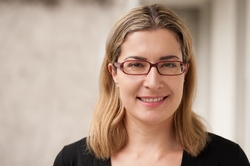
Dr Kallia Lempidaki studied Greek and Latin epigraphy at the section for Greek and Roman Antiquities of the National Hellenic Research Foundation (NHRF) and at the Aristotle-University of Thessalonike. Her dissertation Funerary fines and curses in ancient Greece: multa sepulcralia from the Roman provinces Macedonia, Thracia and Achaea from 2015 she analyses the legal aspects of funerary inscriptions containing prohibitions as well as their relation to the legal and historical conditions of these parts of the Roman Empire. The main focus of her research lies on the juridical aspects of the ample epigraphic evidence from mainland Greece. At the moment she is preparing the publication of her PhD-thesis in the series Μελετήματα of the NHRF.
|
Dr Lempidaki about her work at CSMC: Private regulations for the use of a funerary monument, as well as prohibitions and sanctions protecting these rules, were usually written down on perishable material, mostly papyrus. These texts had the form of a cheirographon, a special juridical deed, written from a subjective perspective in the first person. Unfortunately we have neither papyri from Greece nor from Asia minor. On the other hand these deeds formed the basis for the funerary inscription, which survived, chiselled in stone. My analyses focus on the transition of the personal manuscripts to the deeds on stone, which were conceived as permanent forms of information and communication between the founder of a grave and the readers of the text. At the moment I am turning my attention mainly to the presentation of the texts, the visual organisation on the relevant media and the primary archaeological context. |
Dr Stefano Martinelli Tempesta (March – April 2016)

Website | Contact
Dr Stefano Martinelli Tempesta, PhD in Classical Philology, is a research assistant in Ancient Greek Language and Literature at the State University of Milan, Italy, where he teaches Textual Transmission of Greek Literature. The main field of his studies is the textual tradition of ancient Greek authors both with respect to its material aspects and its historical and cultural background. He has published papers and monographs on the manuscript tradition of Euripides, Plato, Aristotle, Isocrates, Demosthenes, Plutarch, Quintus Smyrnaeus, on methodological issues concerning textual criticism and editorial technique and on the constitutio textus of Sappho and Pindar. Another focus of his is the Byzantine and humanistic transmission of ancient Greek texts and the Latin translations of Greek texts during the period of Humanism and the Renaissance as well as the editions of Greek texts printed between the 15th and 16th centuries. Dr Martinelli Tempesta has also studied manuscript marginalia in several copies of early printed editions of Plato, Plutarch and Isocrates as well as the restoration of Greek quotations made by Latin authors such as Aulus Gellius in the 15th century. He has published several critical editions of works, including Plato’s Lysis and some Latin translations of Plato and Isocrates. He is currently preparing a new critical edition of Plutarch’s De tranquillitate animi and is leading the editorial team of the new Oxford Classical Texts (OCT) edition of Isocrates’ Orationes et epistolae. In co-operation with Giuseppe De Gregorio, Antonio Rollo and David Speranzi, he is also working on an Italian project called ‘Repertorio dei copisti greci nelle biblioteche italiane’.
|
Dr. Martinelli about his work at CSMC: During my two-month stay at CSMC, I will be working to complete my Oxford Classical Texts (OCT) edition of Isocrates. I also plan to start preliminary work on the manuscript tradition of Aristotle’s Nicomachean Ethics (more than 120 mss.), starting with the examination and the collation of a large number of manuscripts of the fifth book. |
Dr Florinda De Simini (October 2015 – April 2016)
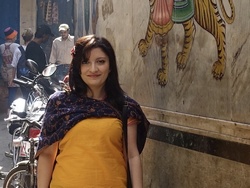
Florinda De Simini is a post-doctoral researcher and adjunct professor for the History of Ancient and Mediaeval India at the University L’Orientale, Naples. She graduated in Classics (BA) at the University of Naples Federico II in 2004 and in Classics with Sanskrit (MA) at the University of Naples L’Orientale in 2008. Her PhD in Indic and Tibetan Studies was completed in 2013 at the University of Turin. Her main areas of expertise are the study of mediaeval traditional literature in Sanskrit as well as the religious and ritual aspects characterising the manuscript cultures of India. She is currently conducting research on rituals, thereby focusing on manuscripts in the Hindu traditions and on the transmission and diffusion of the Śivadharma Corpus.
|
Dr De Simini about her work at CSMC: During my stay at CSMC, I plan to finalise a book that I have been working on for the past year and which represents the outcome of the PhD thesis I defended at the University of Turin in the summer of 2013. The main topic of this book, which is due to appear in CSMC’s series of monographies in 2016, is the different rituals focusing on manuscripts, reconstructed on the basis of early mediaeval, mediaeval and early modern Sanskrit literary sources. The broader aim of this work is to enrich our understanding of the manuscript cultures of India by stressing the iconic value attributed to manuscripts in all the religious traditions originating in the subcontinent and analysing their uses in the contexts of ritual and performance. I believe my research stay at the Centre will be a valuable opportunity for me to broaden my knowledge of the study of manuscript cultures as an independent field of research and to learn from comparing my case studies with analogous phenomena in different cultures. |
Dr Anna Rita Coppola (October – December 2014)
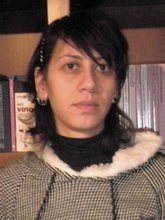
Anna Rita Coppola studied African History at the University of Naples ‘L’Orientale’. She graduated in 2004 with a thesis on East African historiography entitled ‘The Origin of the Swahili Islamic Civilization: the Kilwa Chronicles’ and received her PhD in Islamic Civilization: History and Philology at the University of Rome with a dissertation entitled Nūr al-Dīn al-Sālimī and his Tuḥfat al-A‘yān bi-sīrat Ahl ‘Umān: Omani Historiography between Tradition and Modernity. She spent eight months in Musqat at the Shari’a Institute to study Omani history, Arabic and theology in more depth. Since then, she has continued her research on Omani and Swahili historiography as an independent scholar. Her main interest is in contextualising the writing of history relating to categories such as identity and politics in East Africa during the era of the Omani Sultanate and the colonial period, and how the past was narrated in Swahili society, what people actually recorded of their past, when they talked about it, who did so and why.
|
Dr Anna Rita Coppola about her work at CSMC: During my stay at CSMC, I plan to further explore the link between historiography, identity and politics in Swahili historiography and to write a paper on the historiographical production in East African in the 19th and 20th century with a focus on manuscripts. |
Professor Dr Jeffrey F. Hamburger (June 2014)
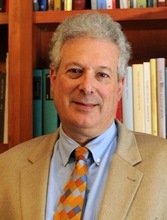
Professor Dr Hamburger holds both his B.A. (1979) and Ph.D. (1987) in art history from Yale University. Before being first a full professor (2000-2008) and then being appointed the Kuno Francke Professorship (2008) at Harvard University he held teaching positions at Oberlin College and the University of Toronto. He has been a guest professor in Zurich, Paris, Leuven, Oxford and Fribourg, Switzerland.
Professor Hamburger's teaching and research focus on the art of the High and later Middle Ages. Among his areas of special interest are medieval manuscript illumination, text-image issues, the history of attitudes towards imagery and visual experience, and German vernacular religious writing of the Middle Ages, especially in the context of mysticism. Beginning with his dissertation on the Rothschild Canticles (Yale, 1987), much of his scholarship has focused on the art of female monasticism, a program of research that culminated in 2005 in an international exhibition, Krone und Schleier (Crown and Veil) that was sponsored by the German government and held jointly in Bonn and Essen. An English translation of the essays in the exhibition catalog was published by Columbia University Press in 2008. His current research includes a project that seeks to integrate digital technology into the study and presentation of liturgical manuscripts, a study of narrative imagery in late medieval German prayer books and a major international exhibition on German manuscript illumination in the age of Gutenberg. The recipient of numerous awards, including fellowships from the John S. Guggenheim Foundation, the American Philosophical Society, the National Endowment for the Humanities (NEH), and the Humboldt-Stiftung, Prof. Hamburger was elected a Fellow of the Medieval Academy of America in 2001 and a member of the American Academy of Arts & Sciences in 2009. He serves on numerous advisory boards, among them, those of the German Manuscript Cataloguing Centers, the Europäisches Romanikzentrum, the Centre International de Codicologie, Bibliothèque Royale Albert Ier, Brussels, and the Katalog der deutschsprachigen illustrierten Handschriften des Mittelalters, Bayerische Akademie der Wissenschaften, Munich.
In addition to numerous articles, Prof. Hamburger's books include: Script as Image (Leuven: Peeters, 2014); The Mind's Eye: Art and Theological Argument in the Medieval West , co-edited with Anne-Marie Bouché (Princeton: Department of Art & Archaeology, Princeton University, Princeton University Press, 2005); and The Visual and the Visionary: Art and Female Spirituality in Late Medieval Germany (New York: Zone Books, 1998).
|
Professor Dr Jeffrey F. Hamburger about his work at CSMC: During my stay stay in Hamburg, I will be working to complete my book on the liturgical manuscripts from Paradies bei Soest, to be published by Aschendorff Verlag, Münster, in 2015/16 (co-authored with Eva Schlotheuber, Susan Marti and Margot Fassler). |
Professor Dr Marilena Maniaci (May – June 2014 | June – July 2018 | November 2018))

Marilena Maniaci is full professor of Paleography at the “Università degli studi di Cassino e del Lazio meridionale” since 2008. Her research interests focus on the history of Greek and Latin handwritten book materials and techniques and the development of appropriate methods of analysis and description of medieval manuscripts. She has published several monographs on book terminology, including a terminology of manuscripts (Terminologia del libro manoscritto 1996, 1998), the layout of Byzantine parchment manuscripts (Costruzione e gestione della pagina nel manoscritto bizantino, 2002), and more recently a monograph on the structure and description of the medieval codex (La syntaxe du codex. Essai de codicologie structurale, 2013, with Patrick Andrist and Paul Canart). She has written articles on the materials and techniques of Greek and Latin manuscript manufacture (parchment, inks, dimensions, ruling methods, layout formulae, glossed texts, etc.), on the structure and description of complex codices and on the codicology of the Latin Bible and of Greek and Latin liturgical rolls.
Marilena Maniaci belongs to the boards of a number of renowned scientific journals and is currently president of the international association “Apices. Association paléographique internationale culture écriture société” (until 2018). She leads the team “Codicology and Paleography” within the ESF project “COMSt. Comparative Oriental Manuscript Studies” (www1.uni-hamburg.de/COMST/), and collaborates with the “Sonderforschungsbereich 950 - Manuscript Cultures in Asia, Africa, and Europe”, as an advisor for the publishing of the Encyclopaedia of Manuscript Cultures in Asia and Africa. She has been member (2007-2012) of the advisory board of the German manuscript cataloguing centers (“Wissenschaftlicher Beirat der Handschrifenzentren”). In 2010 she has been ESAJS (European Seminar on Advanced Jewish Studies) Fellow at the “Oxford Centre for Hebrew and Jewish Studies”.
Marilena Maniaci was selected as a member of the “European Science Foundation Pool of Reviewers” (2009-2012) and of the group of experts appointed by the Italian national agency (ANVUR) for the quality evaluation of scientific research (VQR 2004-2010); she also acts as a reviewer for international projects and institutions (among which the Italian Ministery of Research, the Israel Academy of Sciences, the Österreichische Akademie der Wissenschaften, the Facultés universitaires Notre-Dame de la Paix de Namur) and for several international journals.
|
Professor Dr Marilena Maniaci about her work at CSMC: My two-month stay in the CSMC is dedicated primarily to the completion of an article on the new dating and contextualising of a group of XII century Beneventan manuscripts, and to the drafting of another article on annotations and additions in XI century Italian Giant Bibles. I will also collect comparative evidence for an ongoing research project on Byzantine liturgical rolls and contributing to the editing of the Introduction to Comparative Oriental Manuscript Studies, to be published by the end of 2014. |
Professor Dr Jost Gippert (June – August 2013)
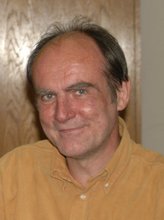
Jost Gippert has been teaching Comparative Linguistics at Goethe University Frankfurt am Main since 1994. After having completed his studies of Comparative Linguistics, Indology, Japanology, and Sinology in Marburg and Berlin (Freie Universität Berlin), he received his Ph.D. for his thesis on the syntax of infinitive constructions in the Indo-European languages. From 1977 to 1990, Jost Gippert held different positions as a lecturer, research associate and assistant professor at the Universities of Berlin, Vienna and Salzburg. While working as a research assistant in the field of Computer Linguistics of Oriental Languages, he habilitated on Iranian loanwords in the Armenian and Georgian languages at University of Bamberg in 1991. He has been an External Member of the Gelati Academy of Sciences (Georgia) since 1996 and a member of the Turfan Committee of the Berlin-Brandenburg Academy of Sciences and Humanities since 2002 and of the Centre for Language of said Academy since 2007. In 1997, Jost Gippert was bestowed the Distinguished Professor title by Sulkhan-Saba Orbeliani Tbilisi State Pedagogical University (Georgia). Furthermore, he was awarded an honorary doctorate by Ivane Javakhishvili Tbilisi State University (Georgia) in 2009 and by Batumi Shota Rustaveli State University (Georgia) in 2013.
Jost Gippert is the founder and director of the TITUS Project (Thesaurus of Indo-European text and language material), which aims at preparing a complete electronic collection of the entire texts handed down in old Indo-European languages and their adjacent idioms (since 1987). Since 2010, he is heading the “Digital Humanities Hesse: Integrated Editing and Evaluation of Text-based Corpora” Centre within the research funding programme of the German state Hesse „Landes-Offensive zur Entwicklung Wissenschaftlich-ökonomischer Exzellenz (LOEWE)” (joint project of Frankfurt University, Technische Universität Darmstadt and Freies Deutsches Hochstift/Frankfurter Goethe- Museum). Jost Gippert has studied oriental manuscripts since the mid-1990ies within the scope of projects aiming at manuscript digitization (e.g. of the Tocharian manuscripts of the Berlin Turfan collection) or palimpsest edition (e.g. the Caucasian-Albanian palimpsest manuscripts from Sinai).
|
Professor Dr Jost Gippert about his work at CSMC: During my first stay as a visiting fellow in the Research Group “Manuscript Cultures in Asia and Africa” in the summer of 2009, my work was dedicated primarily to the review of palimpsests originating from Caucasus. My stay in the CSMC in the summer of 2013, thus already my second longer stay within the group of manuscriptologists at Hamburg University, focused on preparatory work for the Encyclopaedia of Manuscript Cultures of Asia and Africa and the handbook Comparative Oriental Manuscript Studies, the drafting of an article on a Georgian gospel manuscript for “The Secondary Life of Manuscripts” Conference as well as the completion of an article on Buddhist Inscriptions from the Maldives. |
Professor Dr Lorenzo Perilli (June – July 2013)
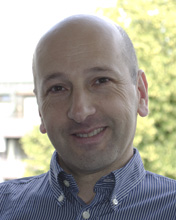
Lorenzo Perilli is a classicist at the University of Rome ‘Tor Vergata’. In teaching and research, he particularly focuses on ancient Greek medical and philosophical texts as well as the methodological aspects of classical studies, ancient and Byzantine lexicography, and the Digital Humanities. His field of research includes Hippocratic and Galenic medicine, empirical medicine in ancient Greece and Rome, pre-Socratic philosophy and, more recently, the dissemination, preservation and transmission of scientific knowledge from Antiquity. Lorenzo Perilli has been preparing the editio princeps of the so-called Hippocrates Glossary by Galen for several years, focusing on a profound analysis of the handwritten tradition.
Lorenzo Perilli was a visiting scholar at several European universities: first, he was granted a scholarship by Alexander von Humboldt Foundation in Munich, then he was a research associate at the Wellcome Trust Centre for the History of Medicine at University College in London (UCL), and, later on, he joined the Classical Philological Seminar at University of Zurich as a visiting fellow. Furthermore, he was a visiting fellow in Utrecht and Vienna and, for a longer period, in Berlin at the Corpus Medicorum Graecorum (Berlin-Brandenburg Academy of Sciences and Humanities) and at Humboldt University in Berlin. Lorenzo Perilli was awarded several international research grants and prizes, among them the “G. Borgia” award from the Italian Accademia Nazionale dei Lincei in 1997, the Award of the Italian Ministry of Cultural Heritage in 2001, and the Friedrich Wilhelm Bessel International Research Award from Alexander von Humboldt Foundation in 2007.
|
Professor Dr Perilli about his work at CSMC: My stay in the CSMC is dedicated to in-depth research into the handwritten tradition of the Hippocrates Glossary by the Greek physician Galen. The text has been handed down in 28 manuscripts that are dated to the 10th to 17th century. Some of these codices have only recently been rediscovered after they had been presumed lost for centuries. Determining the relationship between the manuscripts and their dependency is a complex and difficult task which shall be further advanced over the next few weeks. Attention will be paid to those codices where the text is not arranged in alphabetical order and which played an important role in the formation and transmission of the Glossary. |
Professor Dr Tilman Seidensticker (October 2012 – March 2013)
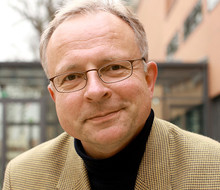
Tilman Seidensticker pursued Arabic and Islamic studies with philosophy and classical studies as minor at the Universities of Göttingen and Tübingen. After having received his Ph.D. in Tübingen, he worked first as assistant professor, then as associate professor at the University of Gießen from 1983 until 1995. Ewald Wagner, then chair for Oriental Studies at Gießen, introduced him to the research field of Arabic manuscripts. In 1995, Tilman Seidensticker accepted the chair for Islamic studies at the University of Jena where he is also heading the section for “Arabic Manuscripts” of the long term project “Cataloguing Arabic Manuscripts in Germany” (Academy of Sciences of Göttingen) since 1997. He has been involved with manuscript studies in Hamburg already since 2008 when he joined the former research group “Manuscript Cultures in Asia and Africa” (2008-2011). Further research interests include pre-Islamic religious history, early Islamic poetry and aspects of contemporary Islam.
|
Prof. Dr. Seidensticker about his work at CSMC: During my stay in the CSMC I plan to intensify the cooperation with my Hamburg colleagues in the first place and supervise the two PhD theses on the layout in Arabic manuscripts (sub-project B05). Furthermore, as Regional Editor of the Encyclopaedia of Manuscripts in Asia and Africa I will continue to advance the assignment of tasks in the field of the Arabic-Persian-Turkish manuscript culture. Finally, inspired by the CSMC Workshop on "Manuscripts in Motion" I plan dealing with the question of "How Arabic manuscripts moved to German libraries. |
Dr Uta Lauer (October 2012 – December 2012)
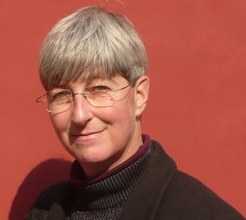
Uta Lauer has been working as a guest professor at the University of Stockholm since 2007 and teaches Chinese art and art history there. Before moving to Sweden, she spent two years working as a guest professor at Huanan Normal University in Guangzhou and at Shanghai Normal University. A research scholarship from the Chiang Ching-kuo Foundation enabled her to work on a project on the iconography of the banana plant in Chinese art, which led her to write a number of scholarly articles and talks on the subject which she held at conferences, culminating in a book that is to be published. Dr Lauer first began to focus her attention on the academic study of Chinese writing and calligraphy much earlier in her career when she was a college assistant at the University of Heidelberg, Germany. She has been the editor of an academic journal called Studien zur Ostasiatischen Schriftkunst [Studies on East Asian Calligraphy] for a number of years now. She reviews academic publications for several international journals and also works for the German Research Foundation as an expert reviewer. At the Centre for the Study of Manuscript Cultures at the University of Hamburg, she will be chairing the ‘Manuscripts in Motion’ workshop in November 2012 and is to hold a talk entitled ‘Shattered Frames – Challenging the Credibility of Colophons’ in January 2013 as part of the conference called ‘Edges and Frameworks on Manuscripts’. Her work on the relationship between calligraphy and the writing of Buddhist sutras is expected to be published in issue no. 5 of manuscript cultures.
|
Dr Lauer about her work at CSMC: At CSMC, I particularly like the regular talks held on Thursdays as I can discuss questions that relate to all of the writing cultures concerned with colleagues from round the world and from all kinds of disciplines. The various workshops and conferences are also extremely worthwhile and give me a lot of new ideas for my own work. |
Professor Dr Giuseppe De Gregorio (September 2012 – February 2013)
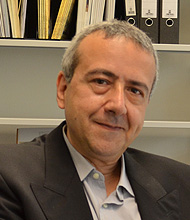
Professor Dr Giuseppe De Gregorio was born in Rome in 1962. He studied Palaeography and Diplomatics as well as Classical Philology at the University of Rome "La Sapienza" where he also pursued Byzantine and Medieval Studies (from 1981 to 1986). Giuseppe De Gregorio continued training with Prof Dr Dieter Harlfinger in Berlin and Hamburg, Germany, between 1987 and 1992. From 1992 to 1998, he worked as a research assistant in Greek Palaeography at the University of Rome "La Sapienza" before he accepted a chair in Greek Palaeography and Byzantine Studies at the University of Salerno in 1998 (from 1998 to 2001 as an associate professor, and, since 2002, as a chair). Furthermore, he is teaching Greek Palaeography at the Scuola Speciale per Archivisti e Bibliotecari of the University of Rome "La Sapienza" since 2007. Giuseppe De Gregorio is coaching Master students and doctoral candidates at the University of Salerno and the University of Rome "La Sapienza". From 2005 to 2011, Giuseppe De Gregorio was a member of different scientific institutions of the Austrian Academy of Sciences (Committee for Byzantine Studies, Board of Trustees of the Institute for Byzantine Studies, Advisory Council for the Centre of Medieval Studies); in Vienna, he participated among other things in cataloguing projects and in preparing new projects in Byzantine studies (the scribes of the Viennese Greek manuscripts, the Patriarchal Register of Constantinople, the Viennese Greek palimpsests). Furthermore, as a member of the Committee "Indici e cataloghi delle biblioteche italiane" of the Italian Ministry of Culture, Giuseppe De Gregorio is in charge of a project for cataloguing the Greek manuscripts of the National Library Vittorio Emanuele II in Rome. In addition, he headed a research group for "Interaction between the East and the West in the Byzantine World: Literary, Hagiographical and Liturgical Aspects of Manuscript Production from the 6th to the 15th Century" (2000-2003). Furthermore, he is a member of the Comité International de Paléographie Grecque and became President of the Italian Palaeographical Society in 2006. Giuseppe De Gregorio’s research interests focus among others on Greek literary and book culture in the Palaiologon period and Renaissance, the reception of the Greek Epigrammar in Byzantine poetry, the written records of Byzantine anti-Jewish treatises and the study of texts and documents on Byzantine monastic foundations; his scientific work is also generally focused on the cataloguing of Greek book inventories (with a particular focus on the written records of the Corpus Aristotelicum) as well as the study of the development of Greek book minuscules.
|
Professor Dr De Gregorio about his work at the CSMC: While working at the CSMC, I plan finishing two articles. The first article is focusing on aspects of the transmission and reception of ancient and Byzantine authors during the Palaiologon period with a particular focus on Maximos Planudes (between Constantinople and Thessaloniki) and his copies of philosophical-rhetorical texts (particularly Libanios, Aristeides and Philo of Alexandria) and on the reception of the Epigrammar; as to Philo I will try to reconstruct a distinctive Constantinopolitan tradition by identifying hands from the Emperor’s chancellery. The second article will deal with aspects of the manuscript production of Byzantine anti-Jewish treatises. While working on my project in Hamburg, it will be possible to analyze by means of concrete examples some phenomena in terms of transmission and reception that are characteristic of the Greek East and examine at the same time certain aspects of the manuscript culture in the late Byzantine society and Osman Constantinople of the 16th century. |
Dr Imre Galambos (June - August 2012 | May - July 2021)

After having received his Ph.D. from the University of California at Berkeley in 2002, Imre Galambos worked for ten years for the International Dunhuang Project (IDP) at the British Library. In the autumn of 2012, he took on a teaching post at the University of Cambridge, where he is now Reader in Chinese Studies. Initially, his field of research was early China, particularly the scripts of the Warring States period as seen in newly excavated texts, which is the topic of his first book (Orthography of Early Chinese Writing, 2006). However, since then he became interested in the manuscript culture of Dunhuang and his focus changed to the medieval period. His second book, co-authored with Tibetologist Sam van Schaik, analyses a group of manuscripts from Dunhuang that used to belong to a Chinese monk passing through the Hexi region on his way to the holy sites of India (Manuscripts and Travellers: The Sino-Tibetan Documents of a Tenth-century Buddhist Pilgrim, 2012). His third monograph focuses on the Chinese and Tangut material excavated from the abandoned city of Khara-khoto in the deserts of Inner Mongolia (Translating Chinese Tradition and Teaching Tangut Culture, 2015). Finally, his most recent book (Dunhuang Manuscript Culture, 2020) is a study of Dunhuang manuscripts from the ninth and tenth centuries.
|
Dr Imre Galambos about his work at the CSMC: During my stay at CSMC I plan to work on my new book on a Tangut manuscript from Khara-Khoto, which is a translation of Jiangyuan (‘General’s Garden’), a Chinese military treatise attributed to Zhuge Liang. Since the earliest Chinese editions of the text date to the Ming dynasty, the Tangut translation is in fact the earliest surviving version and may help us not only to reconstruct a lost Song edition of the text but also to date the work with higher precision. The manuscript, along with a series of translations of other military texts, also provides valuable information on when, why and how secular Chinese texts were translated into Tangut. Finally, much can be learned about Tangut manuscript culture, a subject that has been relatively neglected in the past, as the field has been mostly concerned with matters of linguistics and philology. While there have been studies of the role of the Tangut in the history of printing, especially their use of moveably types, the manuscript tradition of the Western Xia is a field that is still largely unexplored. |
Professor Dr Alexis G. J. S. Sanderson (April 2012 – September 2012)
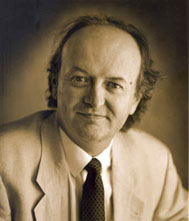
After taking an undergraduate degree first in Classics (1969) and then in Sanskrit (1971) at Balliol College, Oxford, Alexis Sanderson spent six years in Kashmir, studying with a scholar and traditional guru of Saivism. He was Lecturer in Sanskrit in the University of Oxford and a Fellow of Wolfson College from 1977 to 1992. From 1992 to the present he has occupied the Chair of Eastern Religions and Ethics in the same university, and as the holder of that post became a Fellow of All Souls College. His field is early medieval religion in India and Southeast Asia, focusing on the history of Saivism, its relations with the state, and its influence on Buddhism and Vaishnavism. In addition to his research, he trains both undergraduate and postgraduate students at Oxford, especially those undertaking the M.Phil. in Classical Indian Religion and those preparing theses for the D.Phil.
|
Professor Dr Sanderson about his work at the CSMC: During my stay in the CSMC I plan to complete two books. The first, The Śaiva Age, seeks to demonstrate and explain the rise to dominance during the early medieval period in India and Southeast Asia of newly developed forms of religion collectively termed Śaivism that are centred on the propitiation of the god Śiva and various goddesses accommodated as his consort. The evidence I am examining is epigraphic, material, and textual. In the last of these three, which is much the most abundant, I am showing how each of Śaivism’s principal rivals for patronage, the Vai. sn. avas, the Buddhists, and the Jains, adapted themselves to Śaivism’s success by developing new ritual systems along Śaiva lines, and in doing so produced new scriptural corpora in which there is extensive evidence of the wholesale incorporation of Śaiva scriptural material, often with less than effective efforts at disguising the origin of these passages through revision. |
Dr Mauro Nobili (October 2011 – March 2012)
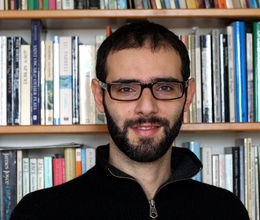
Mauro Nobili graduated in 2004 in the Department for Arabic and African Studies with a thesis on Islam and Traditional Religions in the Empire of Mali and in 2008 received his Ph.D. in African Studies with a dissertation titled The Formative Period in Timbuktu's History, both at the University of Naples «L’Orientale». In spring 2012 he will join the University of Cape Town as a fellow.
His main fields of interest are the history of pre-colonial West Africa and the manuscript traditions in this region. He has been working for the Series Catalogorum, an Italian-French project of cataloguing Islamic manuscripts that involves the Instituto per L’Oriente «C.A. Nallino» (Rome) and the CNRS – Monde Iranien et Indien (Paris). His most recent contributions focus mainly on the script styles displayed in West African manuscripts.
|
Dr Nobili about his work at the CSMC: During my stay at CSMC I plan to finalize my full scale catalogue of the De Gironcourt collection of West African Arabic manuscripts, hosted at the Institut de France in Paris. I am also developing a database of catalogues of Islamic manuscripts from sub-Saharan Africa and I am writing an article for the CSMC journal about the state of the catalogues of West African collections. I will also complete an article on the West African script style from the Saharan region between Timbuktu and the Atlantic shores which is part of my forthcoming project as Post-doctoral Fellow at the University of Cape Town. |
